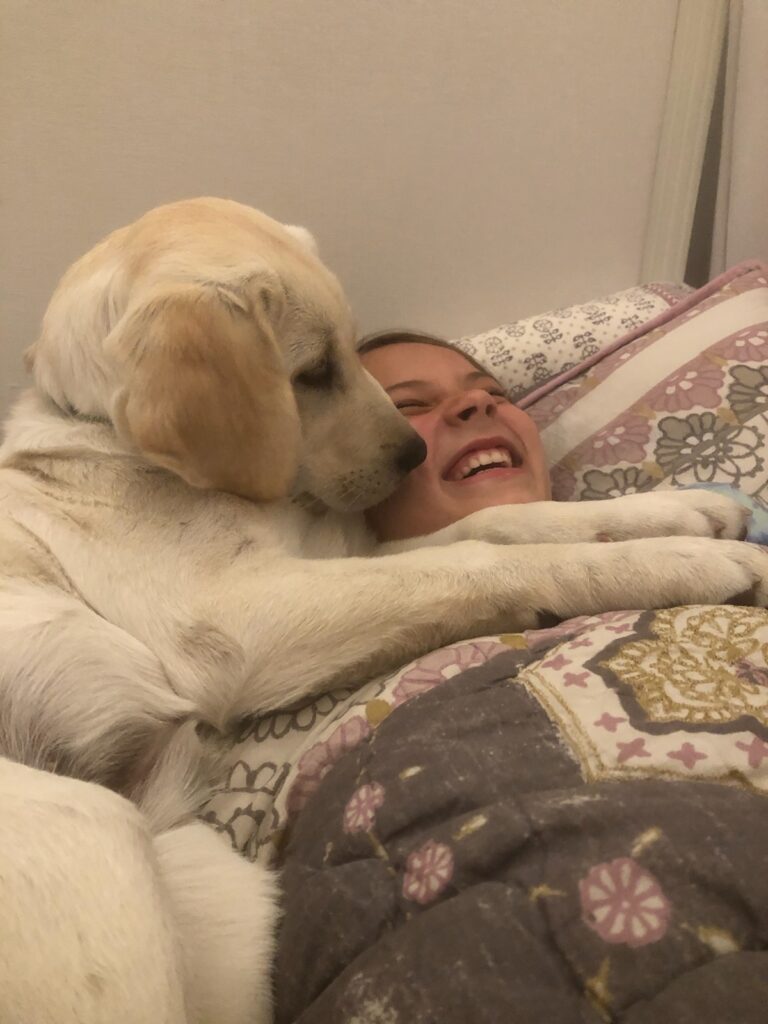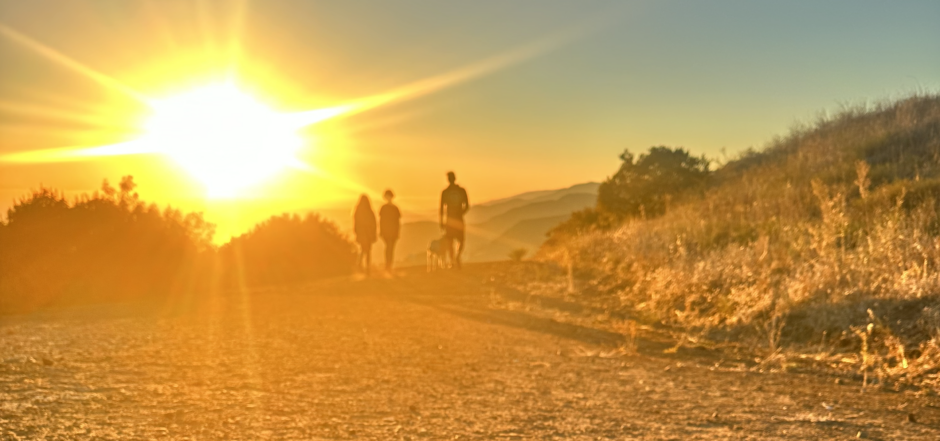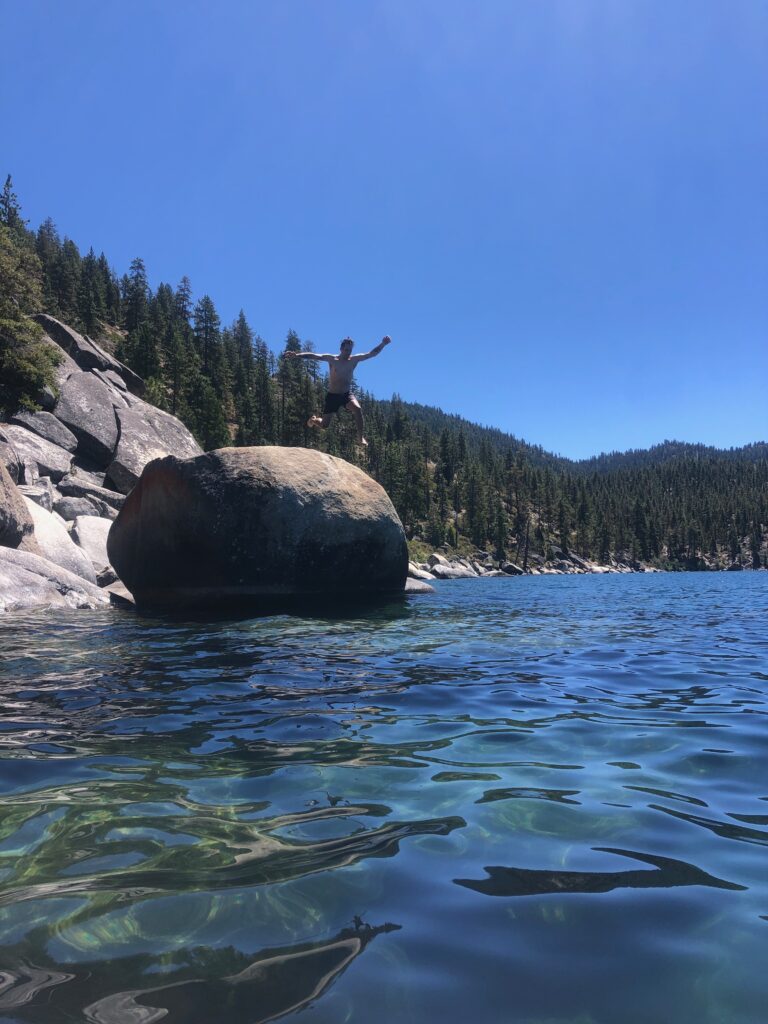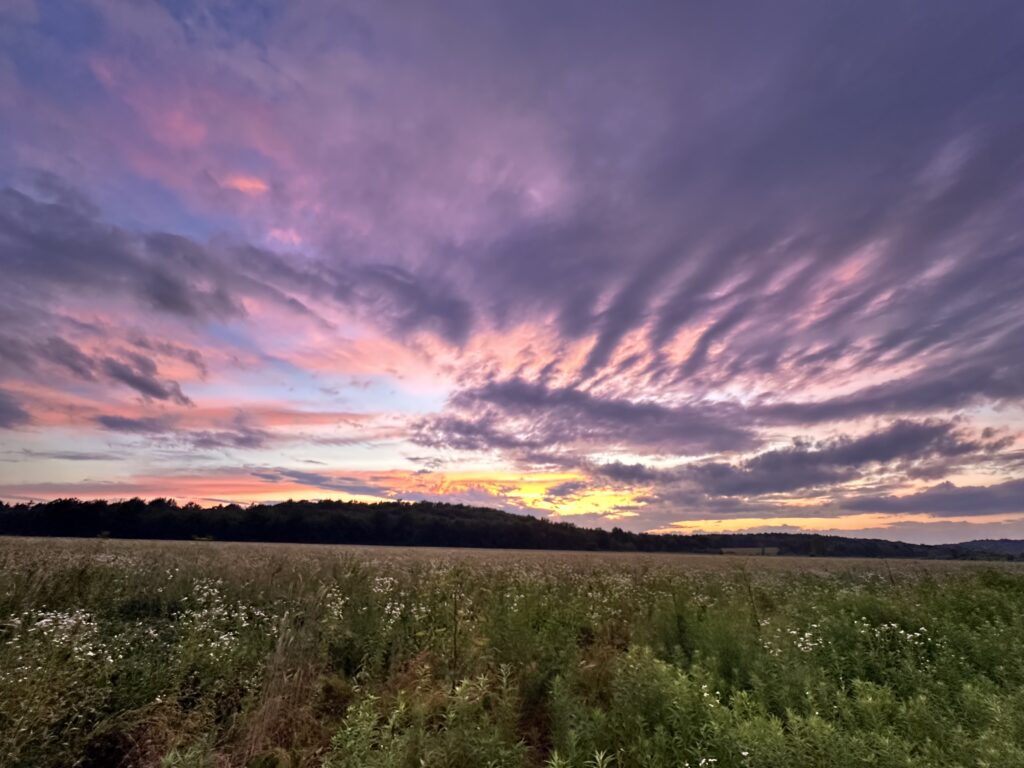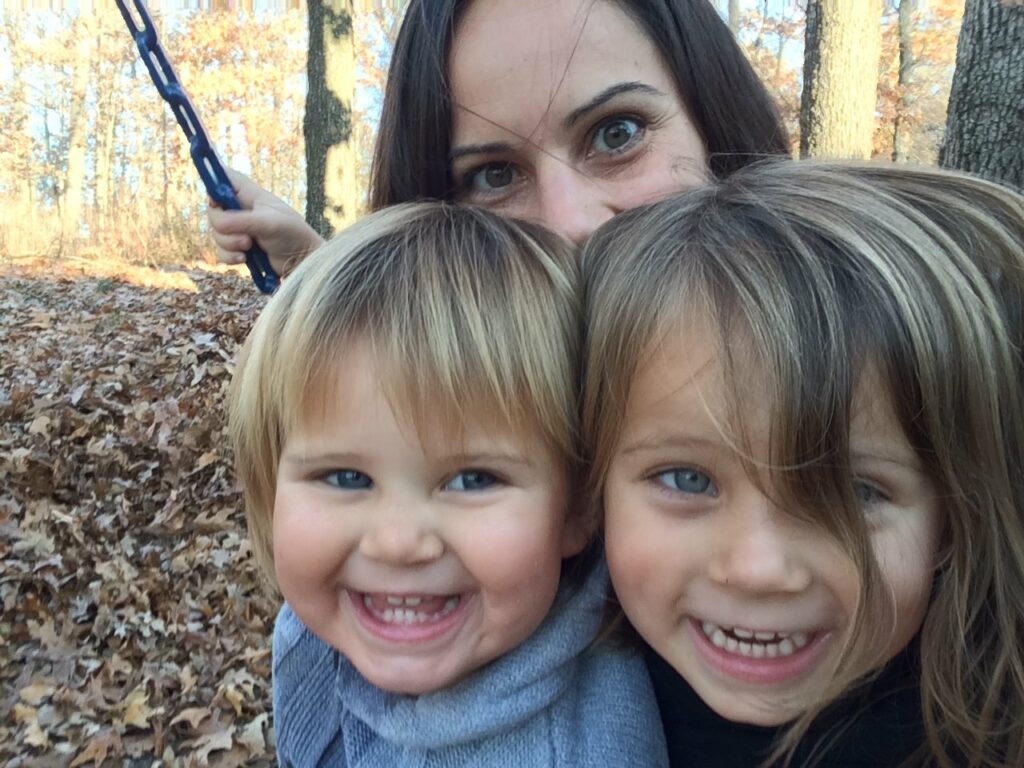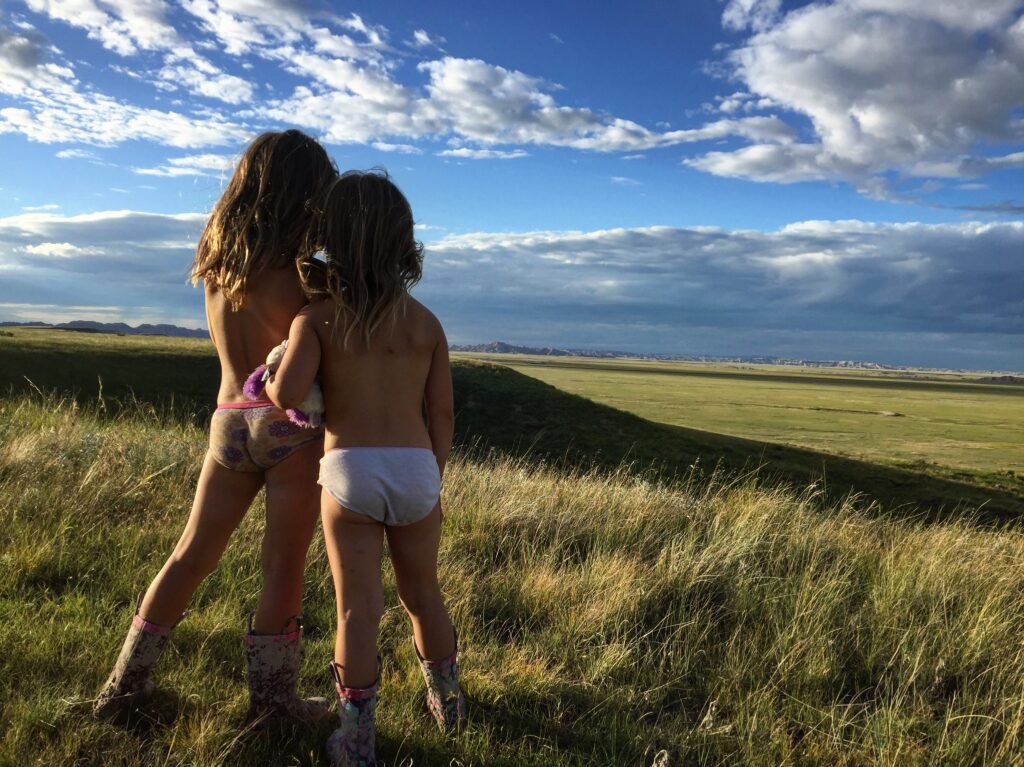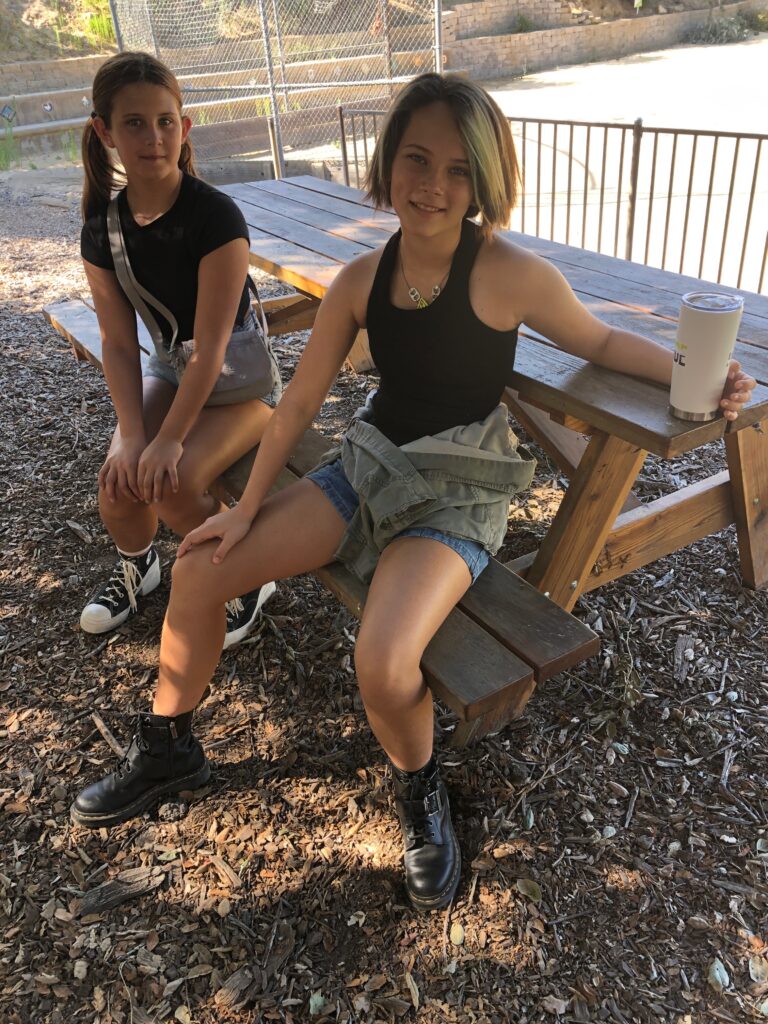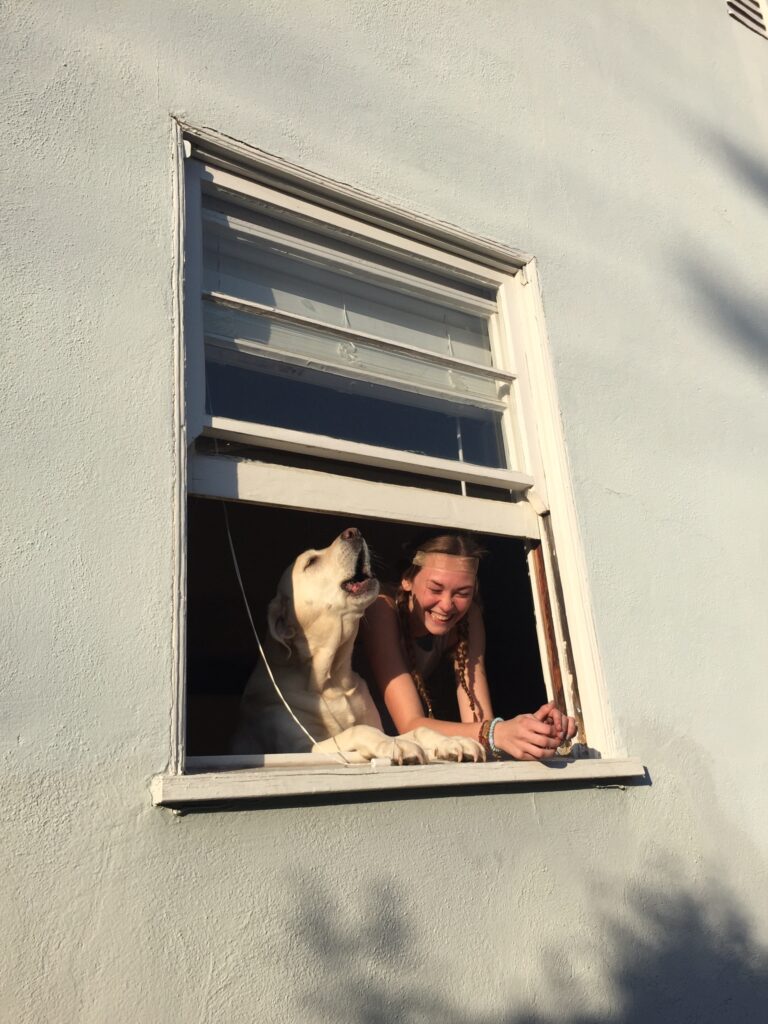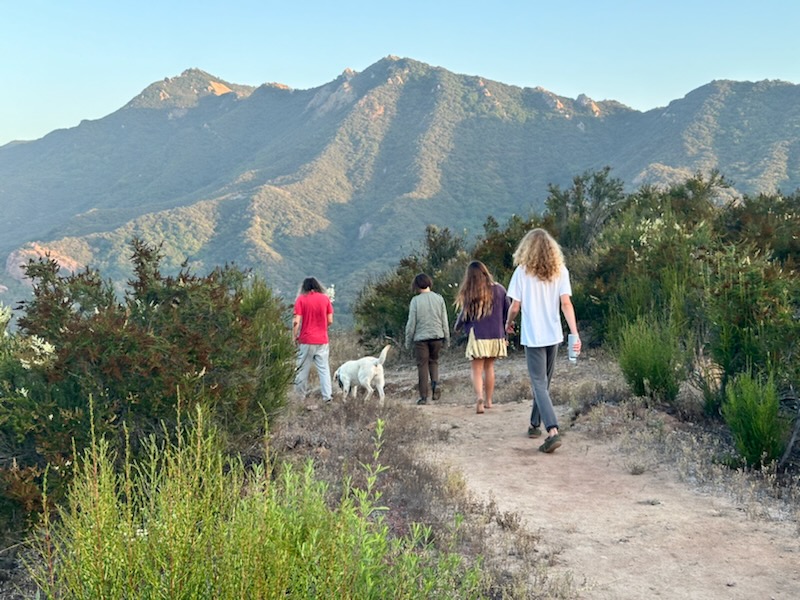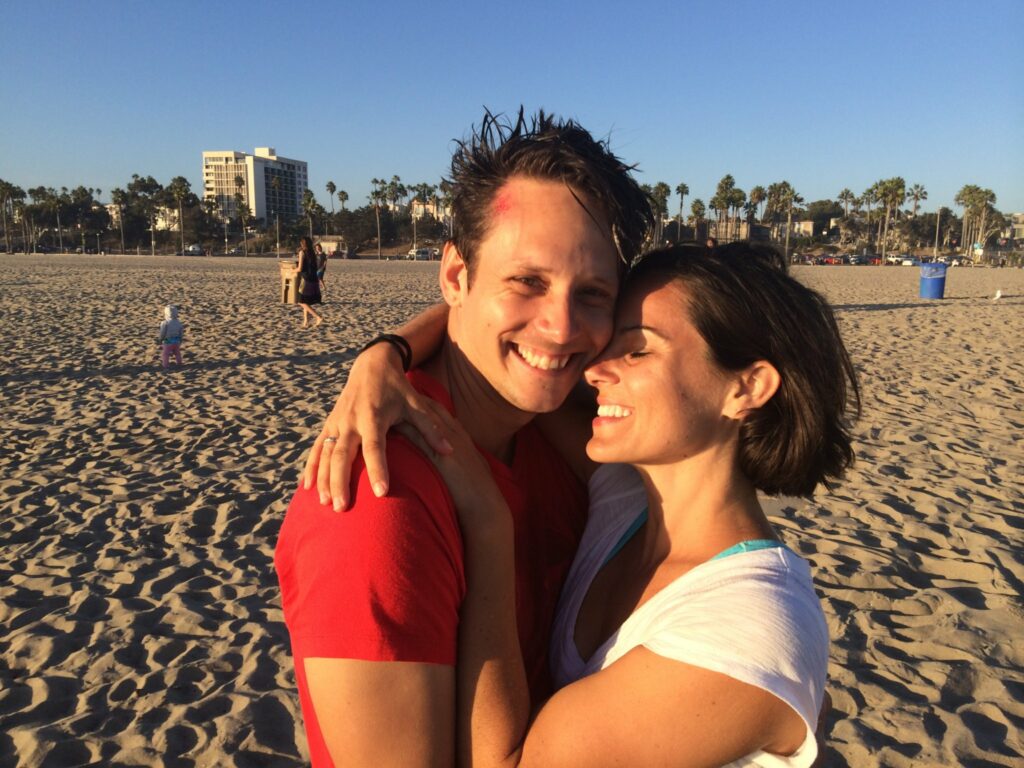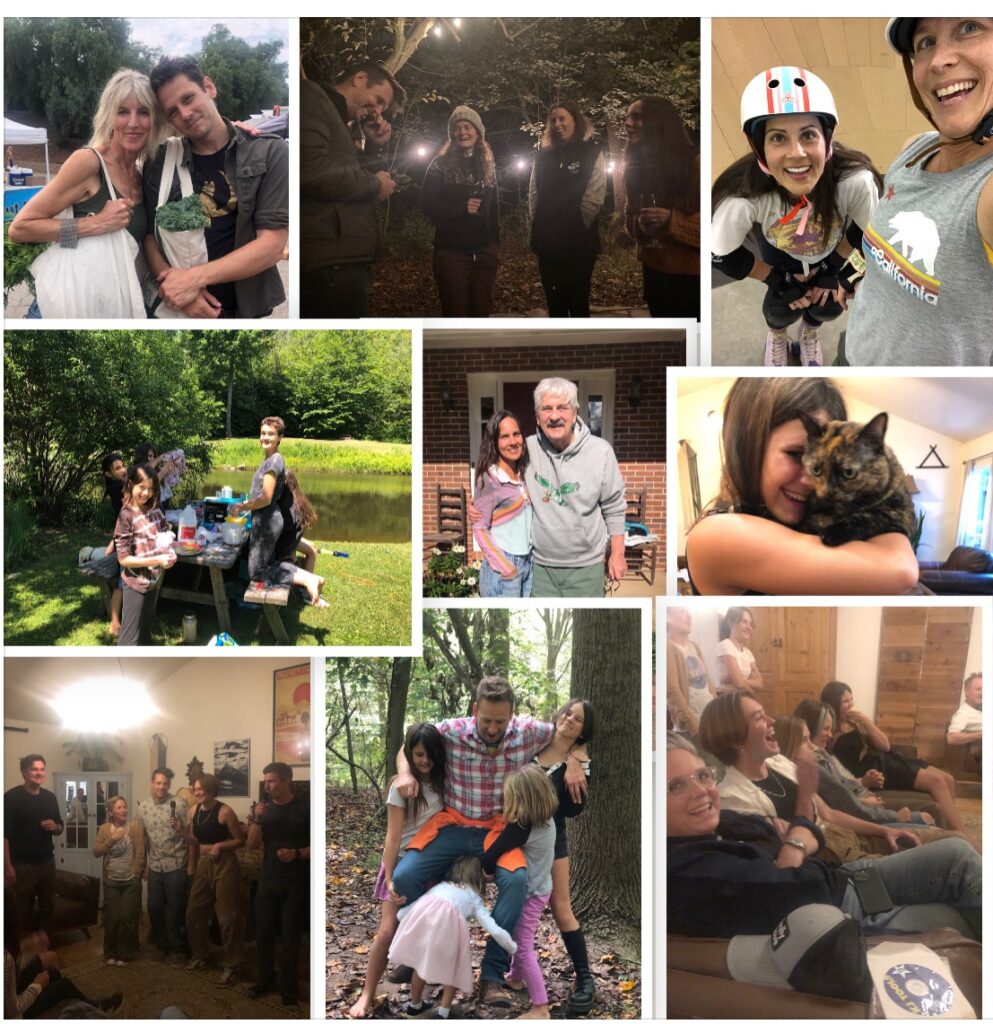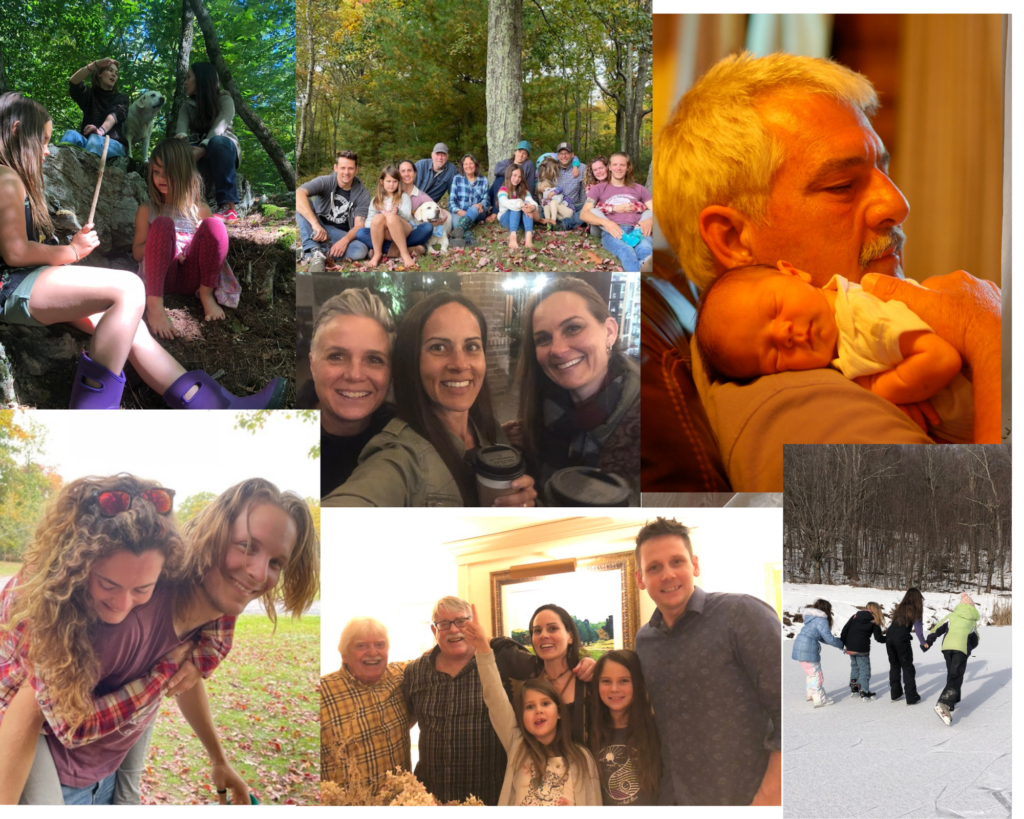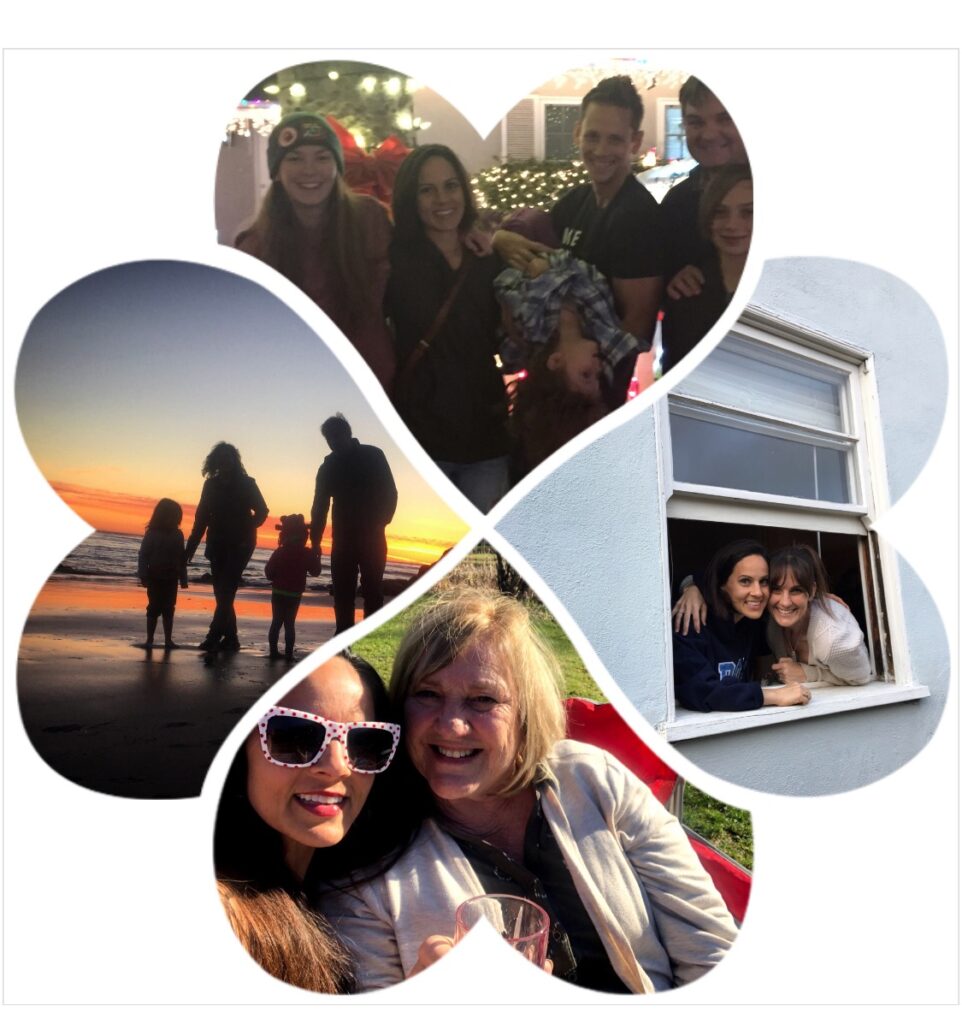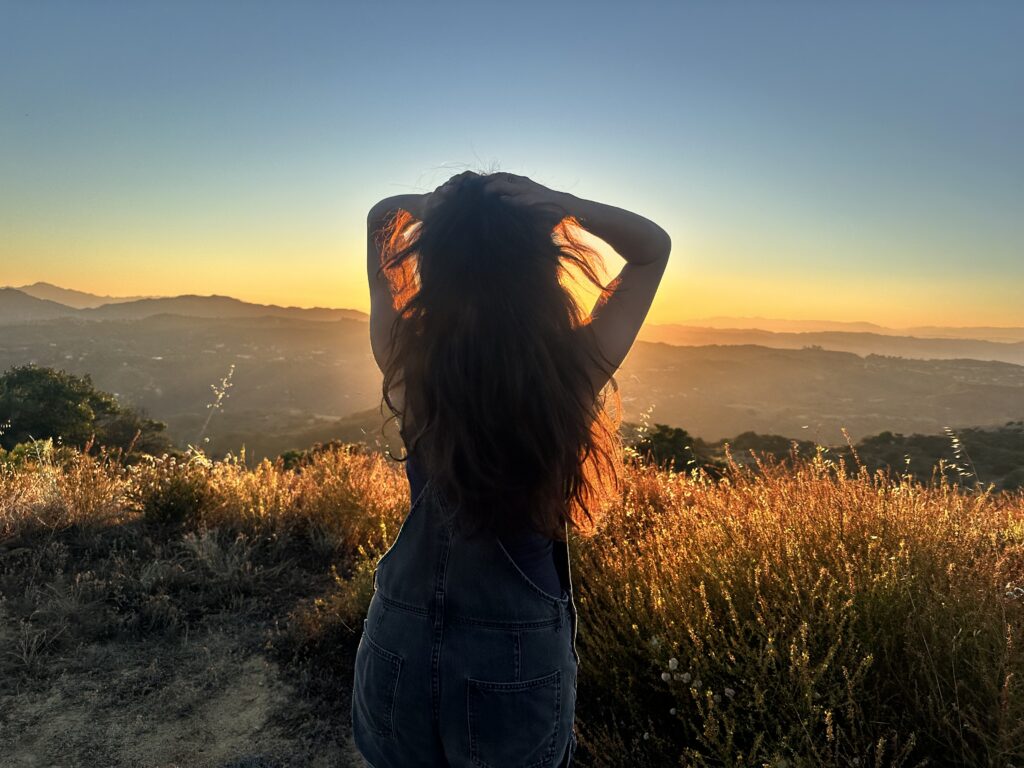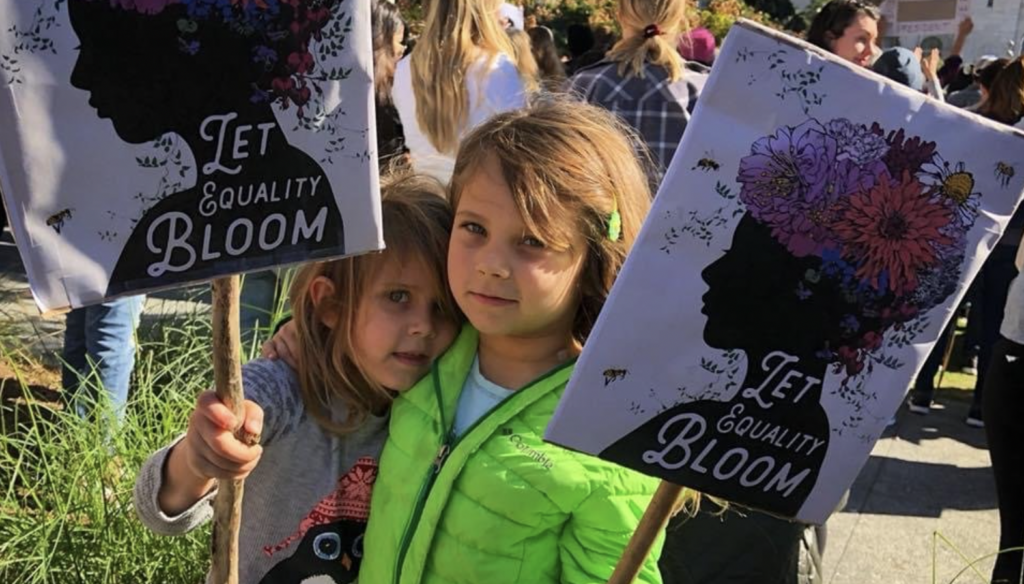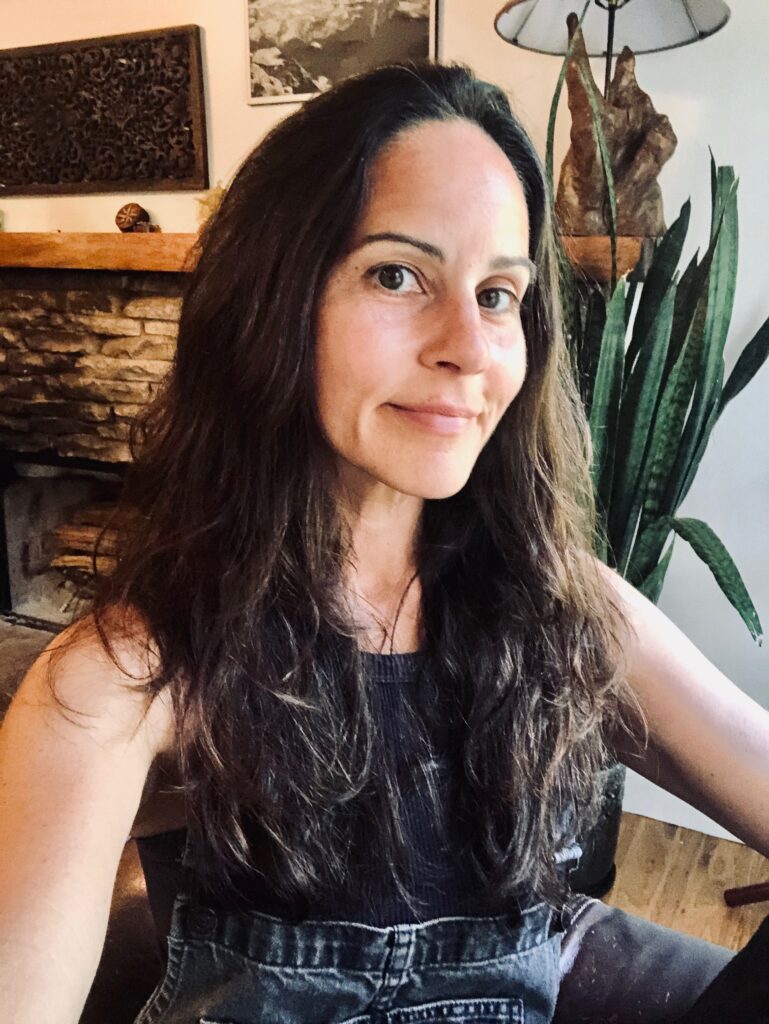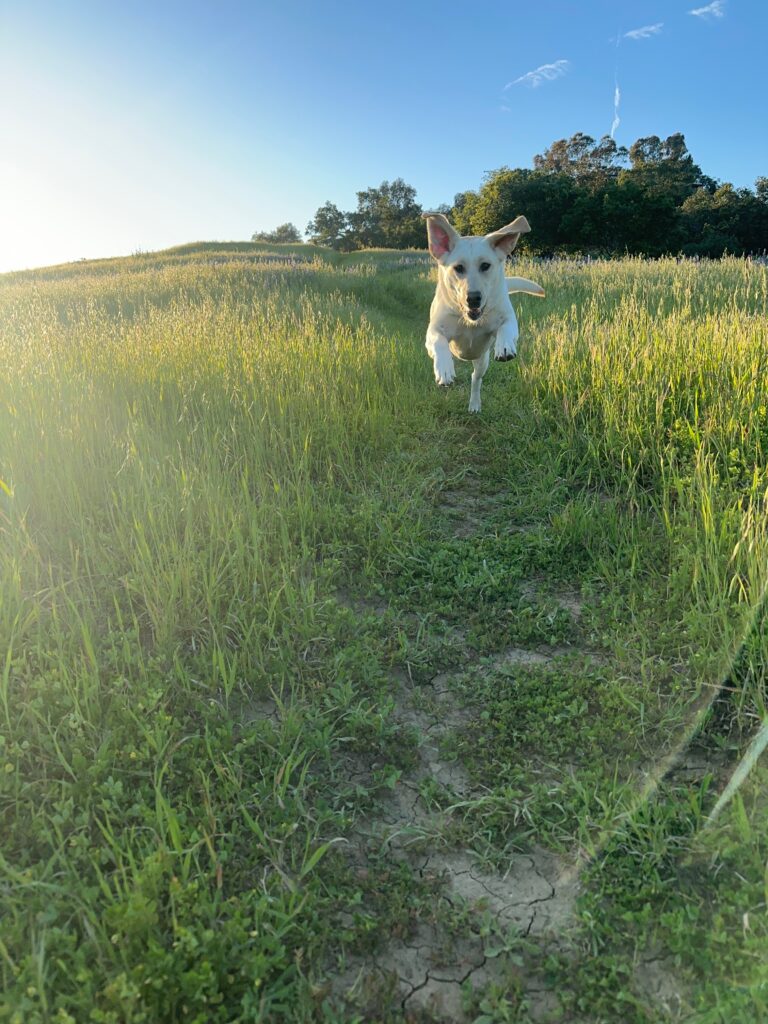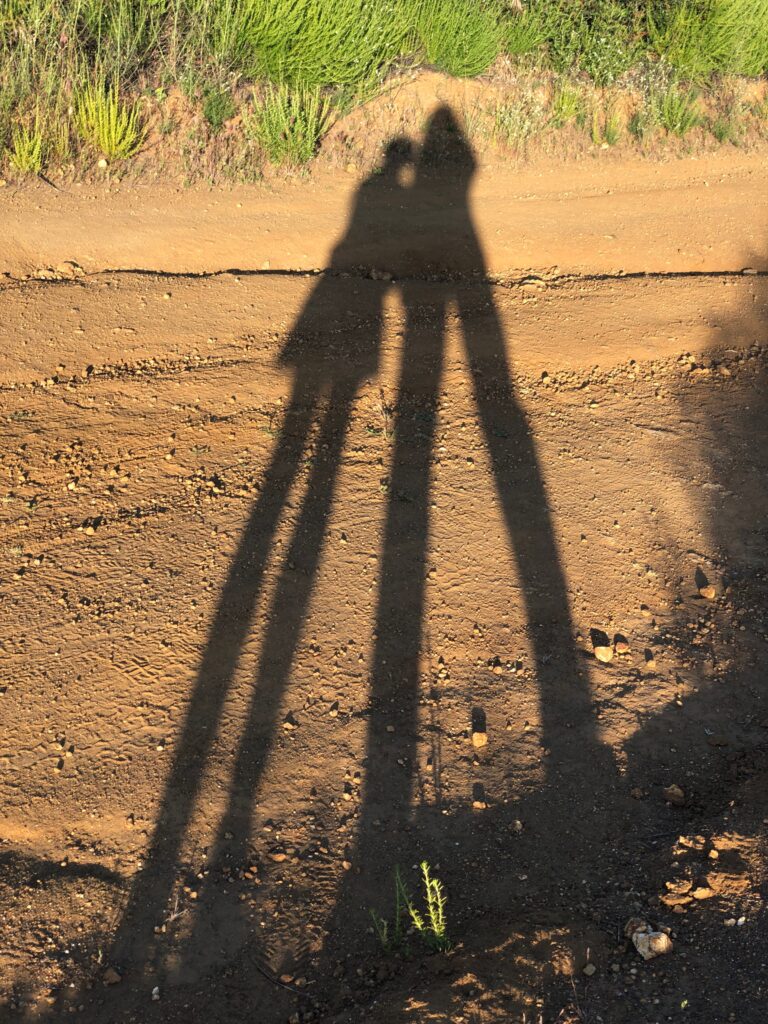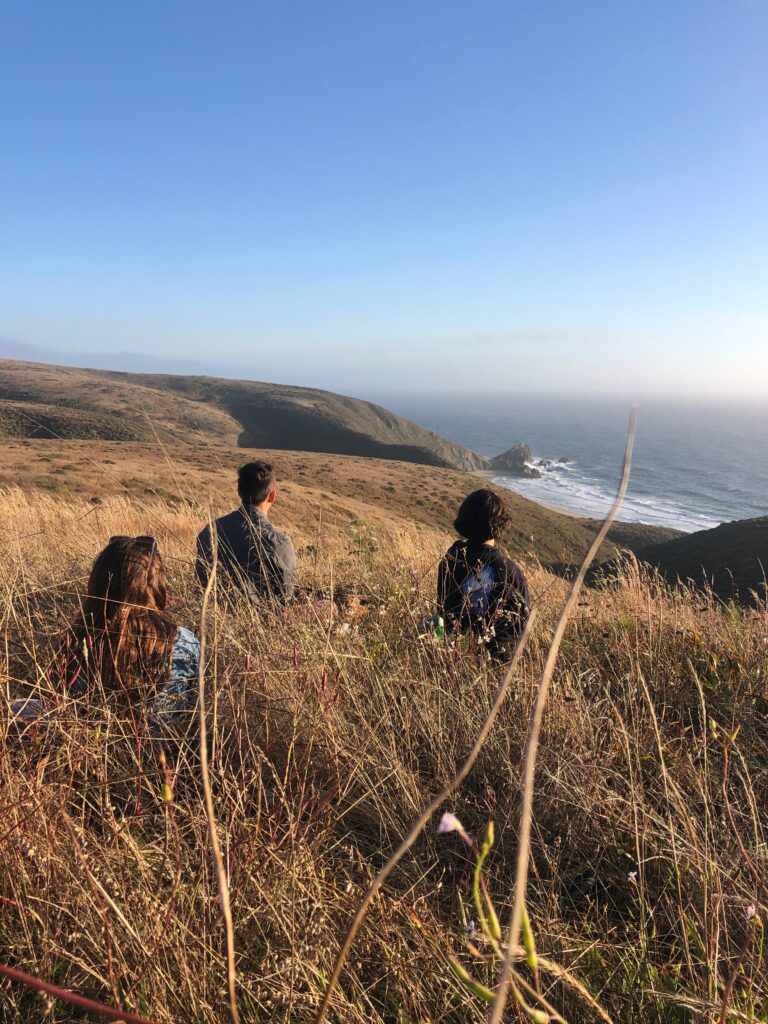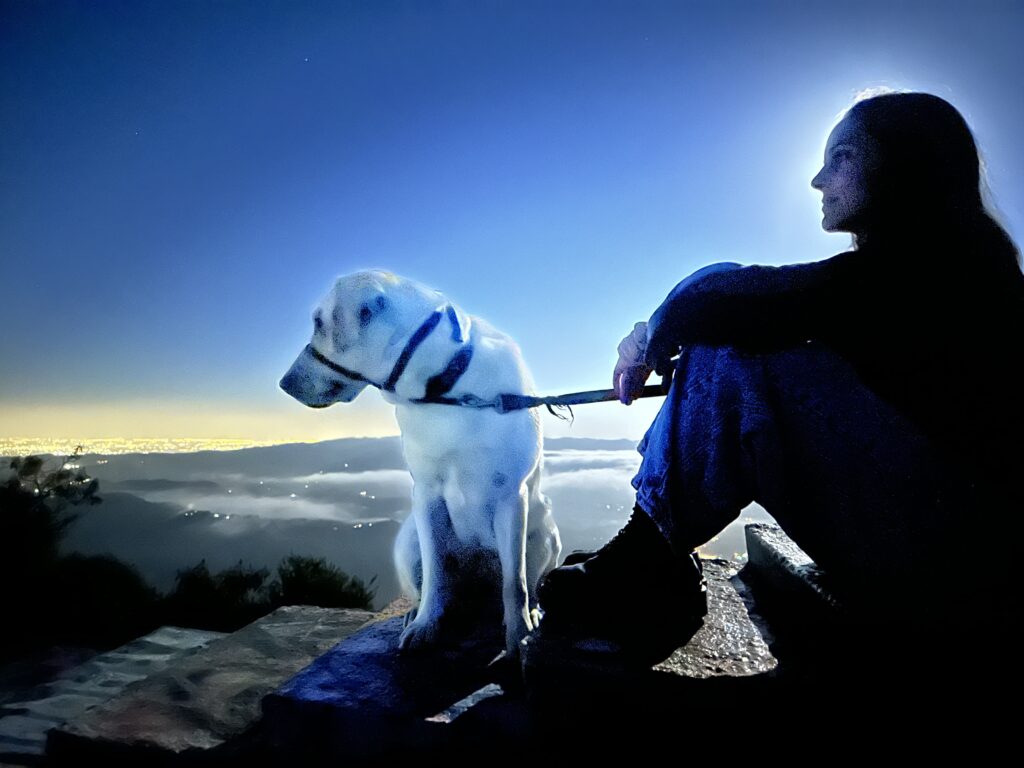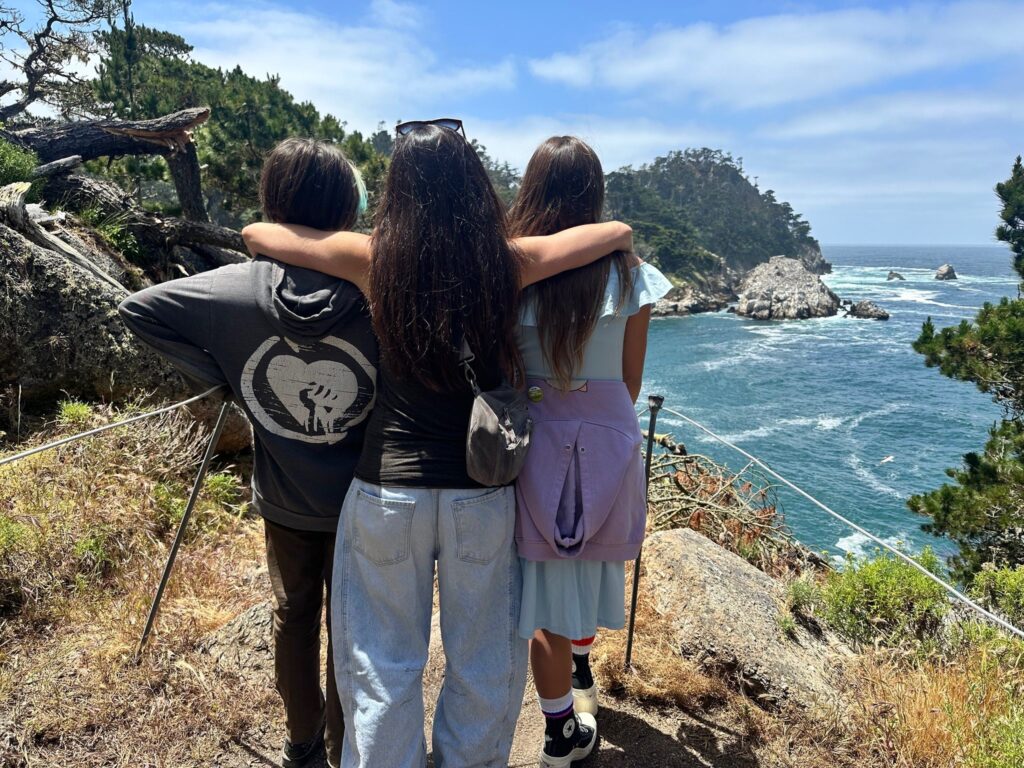My heart grew a chamber I didn’t even know was possible the day I brought my first, very own Labrador Retriever puppy home. When we arrived back to our log cabin in the Pennsylania woods that we called home, she strutted right up to the front door like she had lived there all along. Her waggly tail and puppy breath kisses were a balm to my soul that I didn’t even realize I needed. The first little being ever entirely dependent on me, she filled up my heart with a kind of love I had never known. We gazed into each other’s eyes, and a forever bond was formed. We named her “Zuri” which means beautiful and good in Swahili.
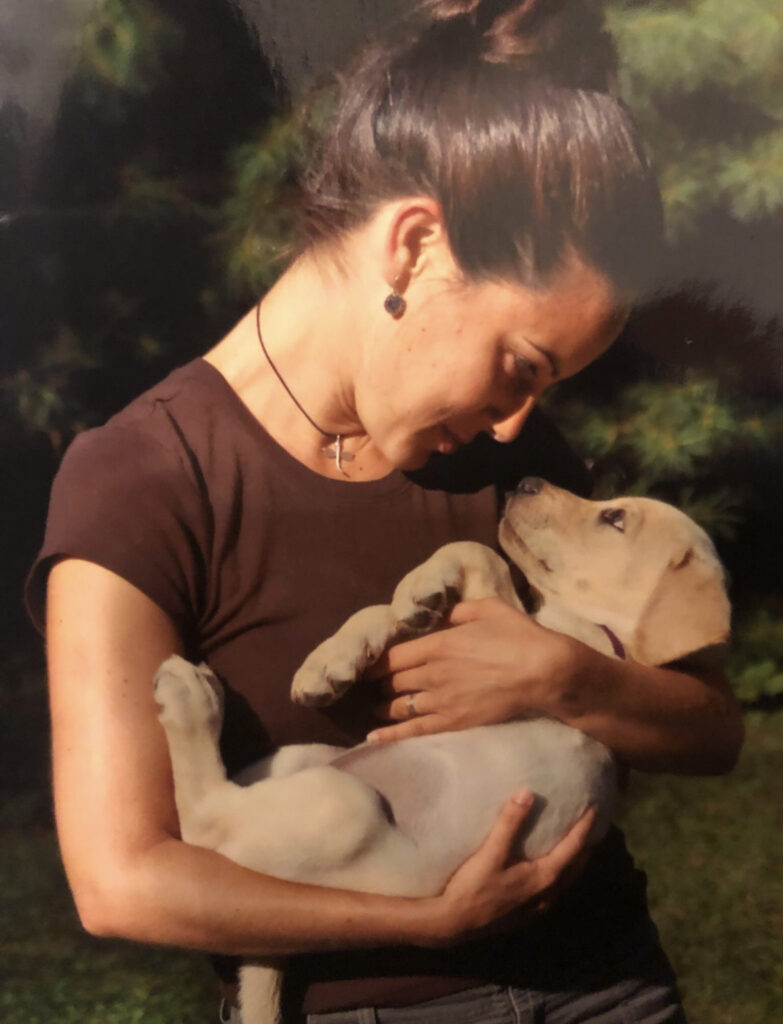
My sister and her little family, after having lived a very collaborative life with Collin and me in which we saw each other almost daily, packed up and moved away to Los Angeles later that summer. They spent their last night on the east coast at our house. They slept on a futon mattress and backpacking foam pads because we were 25 years old and didn’t have any spare furniture. The next day when we returned from dropping them off at the airport, I collapsed on the futon mattress face first and wept. I felt a little warm, furry body snuggle next to me. Zuri was just present with me in my sorrow. She didn’t try to change it or cheer me up. She was just present with me while I grieved. And that was exactly what my heart needed.
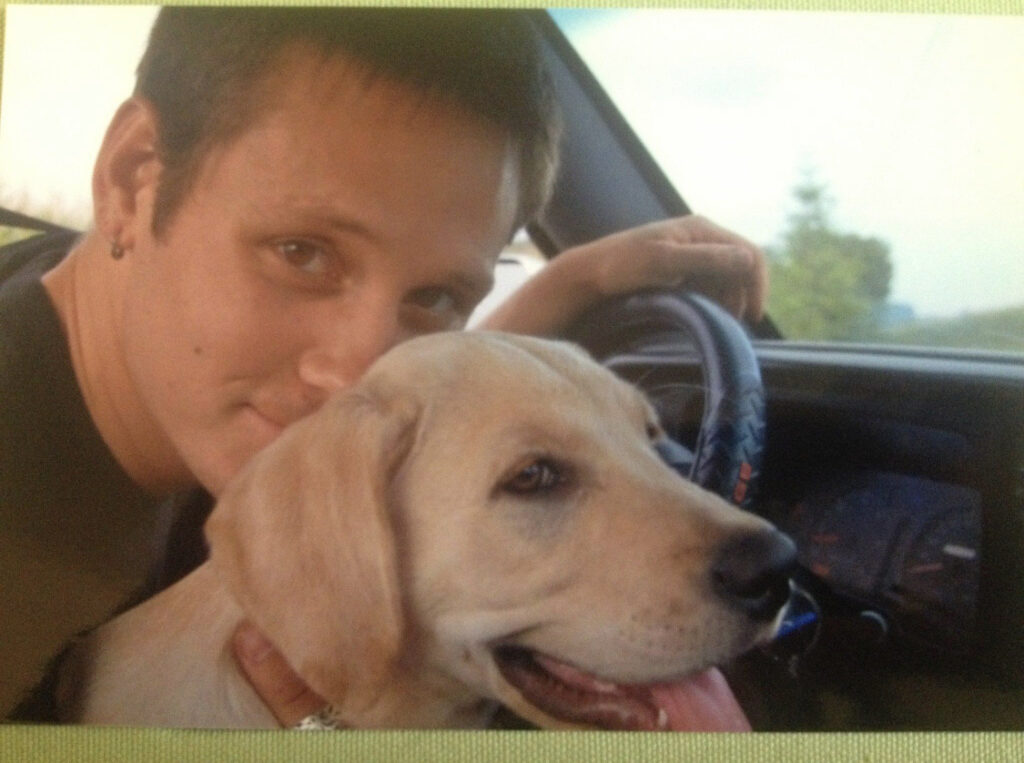
Those upcoming weeks and months were hard missing my sister and her family. We felt their absence acutely. In the midst of the grief, however, there was a lovable, brilliant, emotionally intuitive and ridiculously goofy puppy. She loved all the same things that we did: hiking, camping, swimming, running, eating, snuggling, sleeping, and being outside as much as possible. She fit right into our life and hearts as though she was always meant to be there. And soon it became impossible to imagine that she ever hadn’t been there.
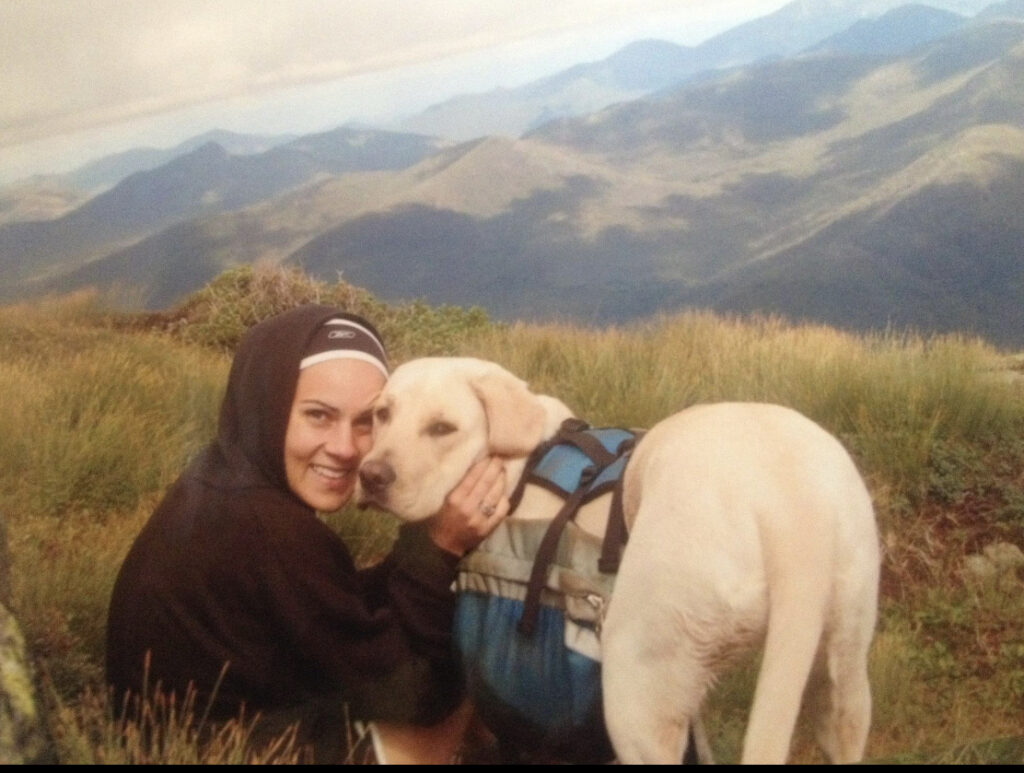
She loved Christmas, and she would howl at her stocking on Christmas Eve when she saw it stuffed with all her favorite treats and toys. She loved to open her wrapped presents, and she would carry them in her mouth over to the person who gave it to her and thank them by snuggling up to that person and wagging her tail. Truly, she was one of the most gracious and fun people to give presents to. She really was a person to us; I often called her a “person in a dog suit.” I wondered if she thought I was a dog in a human suit. But either way, there was a large overlap of spirit and personality that we shared and where we related. We had our differences of course (these were mostly apparent in her undiscriminating tastes for various animal feces). But she really did have a deep, soulful understanding of human emotions and quite a wide grasp on the English language as well.
Once we taught her a command called “stealth mode” whereby she would drop to her belly and crawl like a secret agent. Another favorite trick was “bipedalism.” For this one, she would stand on her back feet only, rising to her full vertical height, and walk forward and backwards to keep her balance for about 10 seconds. She looked like a dog on a unicycle because of the motion she had to use to stay balanced upright. It was one of my favorite things to see in the whole world. We had to tell her to stop this, eventually, because she started casually walking through the kitchen and taking food off the counter. What a comical sight, though, to come into a room to find my dog walking bipedally.
Another year or so passed like this, making memories with the third member of “the team” as we called it. She came pretty much everywhere with us, and one of us was always with her on a daily basis because Collin worked from home. She came on vacation with us. She trained for marathons with us. She was woven into our life in such an intricate and easy-fit way.
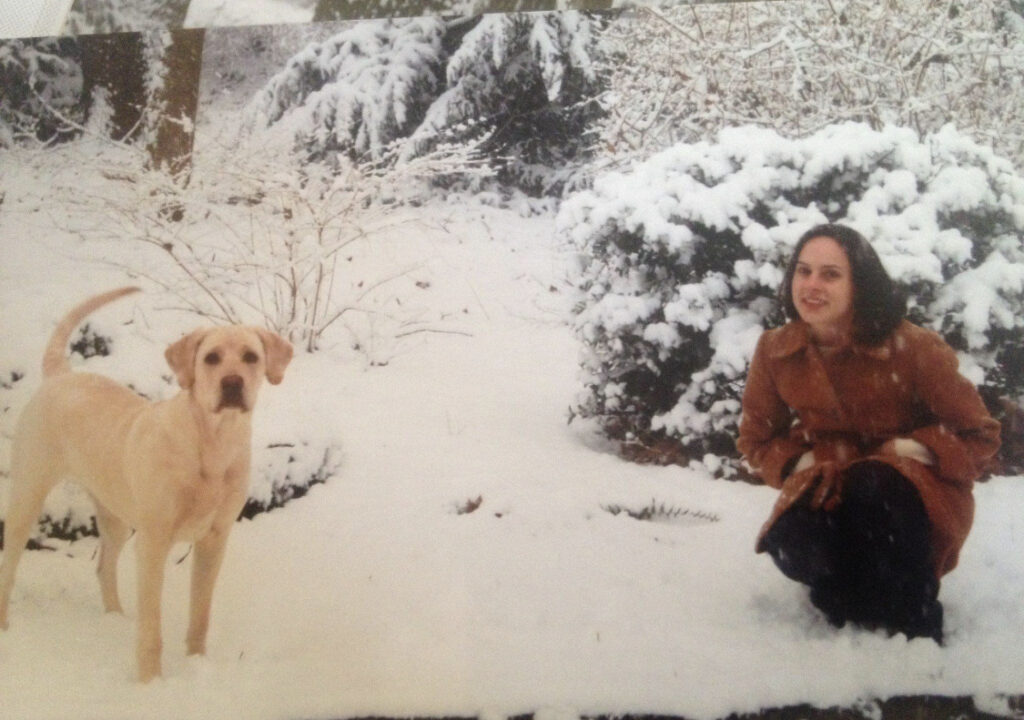
About a year or so after having Zuri, I asked Collin if he was beginning to feel ready to have kids soon or not. Collin told me that he wasn’t sure he wanted to have kids…ever. This was a shock to me. This was probably bound to happen because we got married so young. On our pre-marital counseling test, there was a section about having kids. We both ticked the box that listed “5-7 years from now” as our potential timeframe for starting a family. When you’re only 21, that feels like an infinity away. So, when Collin explained his reservations about having kids, I understood. ish. But I had this intuition that we would love having kids, and that Collin would be an amazing dad. I could easily glimpse into the hypothetical future where one of our precocious kids would slightly mispronounce an elaborate word while taking themselves very seriously. In this hypothetical scenario, Collin and I would exchange a knowing but furtive glance that communicated “I might die of cuteness but play it cool to preserve their dignity.” That was enough for me to know that it was the best possible future for us.
Eventually, Collin came around on the kid thing. And I didn’t pressure him. I did what I knew how to do while he was deciding. I applied to graduate school and encouraged him to join a rock band. That gave him some much needed perspective—namely that he never wanted to be in a rock band again. 9 months later, we had Senya.
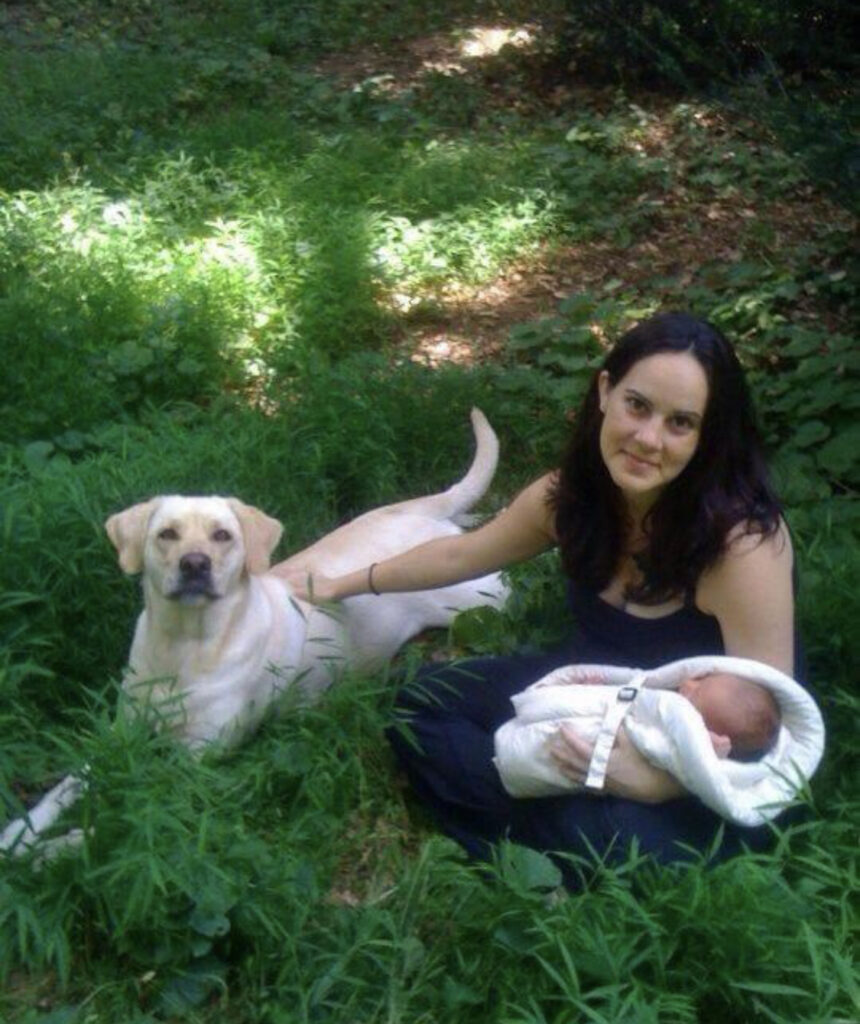
When we brought Senya home from the hospital, I was worried about how Zuri would feel. She had been my first baby, and I was afraid that most people would now think of her as “just the dog.” I used to cry if someone would bring baby Senya a present and not Zuri. I slept with her on that same old futon mattress for the first couple of weeks that we had newborn Senya so that she wouldn’t feel displaced. Zuri, now 3 years old, seemed thrilled. Being a proud big sister, and elevated to the status of the family dog did not seem to dampen her spirits or diminish her sense of belonging. In fact, she seemed to take her role very seriously. She would hike out in front of the baby stroller and patrol for me, keeping at bay any other passing dogs. She would delicately use her stealth mode crawl to sidle up to baby Senya during tummy time. As Senya got older, highchair time came with some amazing perks—the glory of which Zuri had never dared to dream. All sorts of foods were continuously tossed from the highchair to her eager, smiling pupper face. Senya’s giggles and Zuri’s tail wags abounded.
When Senya was 15 months old, the four of us packed up our most important belongings, rented out our cozy log cabin to another family, and moved to Topanga, California for a new job for Collin. We lived in a 450 square foot cabin. If you’re like me and can’t visualize that, just know that it’s TINY. We all shared one, small bedroom. Zuri and Senya shared a bed. “Bed” is a generous term. We all slept on mattresses and box springs on the floor. Then one day a pipe burst, and we had to get rid of the box springs. So it was just mattresses. We were, at that time, broke as a joke. That was how we found ourselves living 3,000 miles away from our serene log cabin. Though in our twenties we had known plenty, our thirties dawned just as the recession did too. We owned ten rental houses in Wilmington, Delaware, and they all dragged our financial situation down the tubes. Our property manager was also stealing from us, and we only found that out after he had caused a lot of long term damage to our finances. Around that same time, Wilmington, Delaware was named “Murder capital of the US.” It wasn’t great for marketing.
I remember wondering if we were going to have to declare bankruptcy and trying to google what that even meant. That was the first time I became enraged at the man who would later become the 45th President of the USA. He, and others with too much money and power, had declared bankruptcy for their own financial gain so many times that George W Bush had pushed a bill into law in 2005 that made the consequences for bankruptcy bad enough that it would eliminate bankruptcies of convenience. Unfortunately, what’s bad for a business tycoon was also almost ruinous for a young family’s struggling finances.
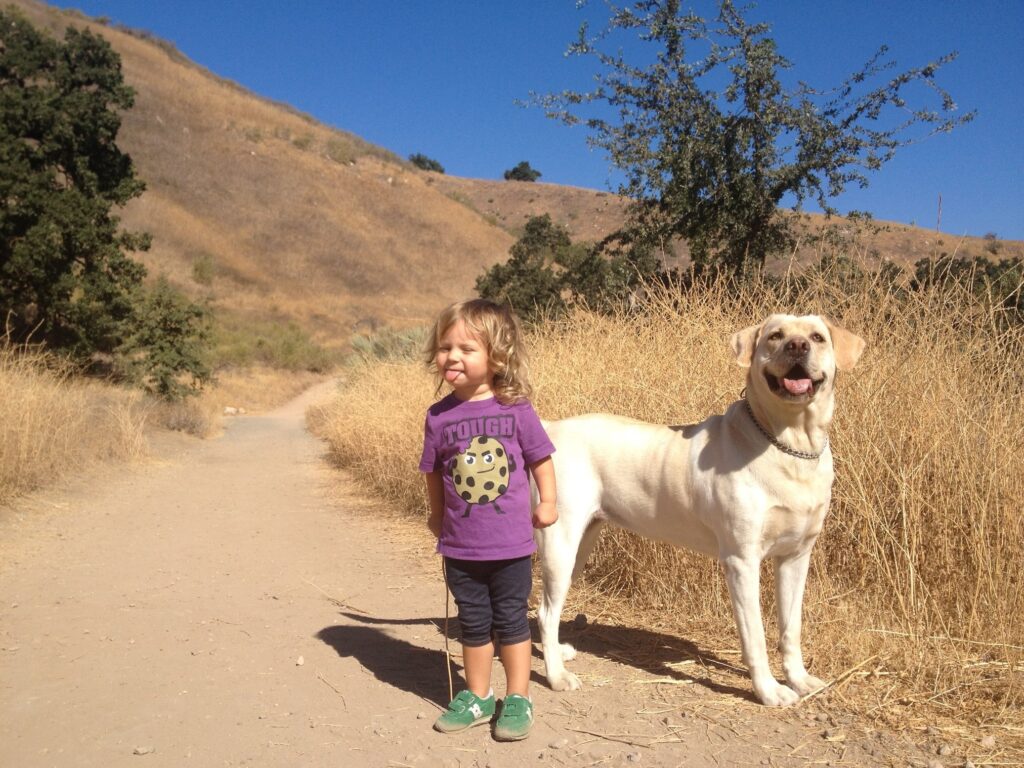
As I was thinking over all the assets that the bank could seize, my mind landed on Zuri. I didn’t know which technical category she fell into—asset or family member. My mind flashed into a hypothetical whereby the four of us were on the LAM headed for international sanction in Mexico. Fortunately, it never had to come to any of this. But I was ready. Instead we hired a lawyer, and, all-told, that plan worked probably much better than my go-to impulse to get the hell outta dodge.
The stress of the financial situation was massive, but it was no match for my dynamic duo of cuteness and endless wonder. I was lucky enough to get to spend all my time with Zuri and Senya, and my heart was truly full of joy more than anything else. The three of us would trek around LA together exploring beaches, parks, and hiking trails. At 19 months old, Senya said her first “I love you.” It was to “puppy.”
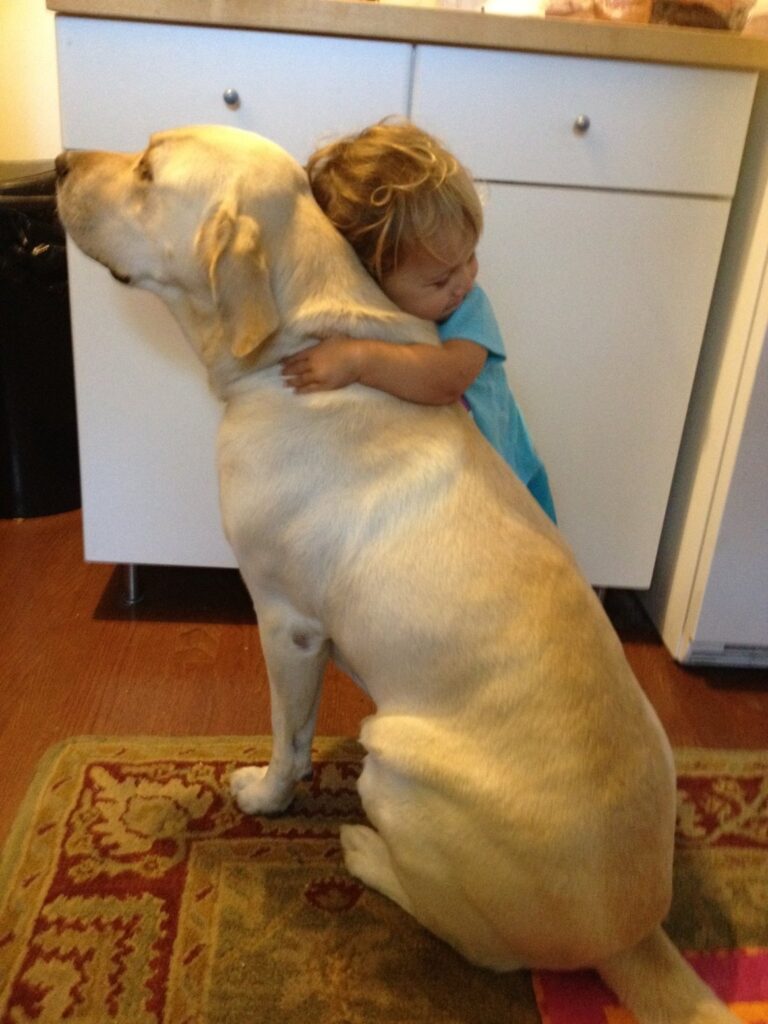
A few months after Senya turned 2, Collin took another job in Arkansas. I was 3 months pregnant with Juniper. Growing up so close to the Mason Dixon line, it was important to me to identify as a northerner. I was nervous to move to the South. The people, however, were overwhelmingly kind, generous, and hospitable. The disheartening ordeal with the rental properties was a lot to bear, and somehow this little pocket of the world encouraged our weary hearts.
We rented a tiny house on a big, gorgeous lake. We were optimistic about the neighborhood because the neighboring house had an Obama sign in their front yard. Also, the lake was perfect for Zuri. Those webbed feet got a lot of action during the almost 3 years that we lived there. Sometimes our neighbors would call us and inform us that Zuri was out for a swim about a quarter of a mile away from our house. She would swim up to people’s floating docks and lakeside patios—especially when people were grilling. She wasn’t a nuisance, though, she’d just paddle on if no one threw her any meat scraps. She had an obsession with swimming across the width of the lake—about 1/4 of a mile—daily and bringing back at least one, rather large rock in her mouth. The rocks she gathered were always the size of a small football; they were heavy! I’d worry about her as I’d see her paddling back with barely any of her face still above water. But she was a strong swimmer, and she loved her rocks. She’d roll on them, gnaw on them, and bat them around with her paws. By the time we left Arkansas, all four of her canine teeth were entirely flattened, presumably by this pastime.
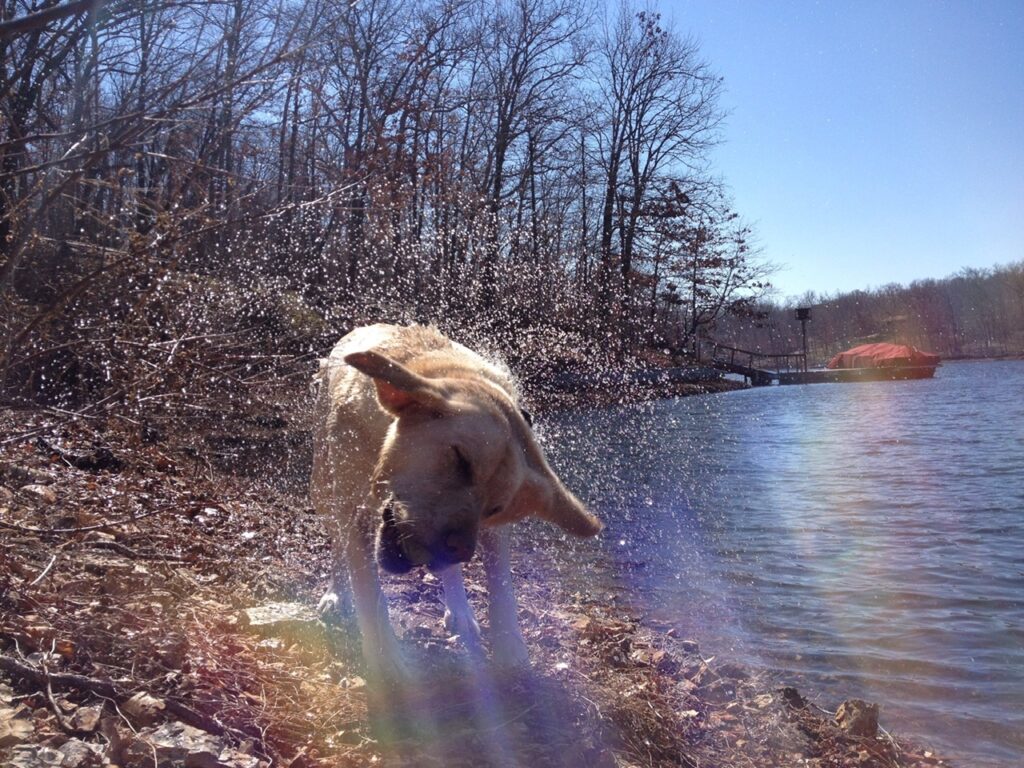
Juniper was born the first spring that we lived in Arkansas. Zuri welcomed her right into the pack with only a quizzical look at me as if to ask “just how many of these bald puppies are you planning to bring home?” But they got along like gangbusters. Juniper and Zuri were absolute partners in crime. Once, after mere moments of turning my full attention to something else, I found Juniper in the pantry with a box of crackers alternating a cracker for her, a cracker for Zuri. Another time, I walked into the room, and they were sharing her pudding.
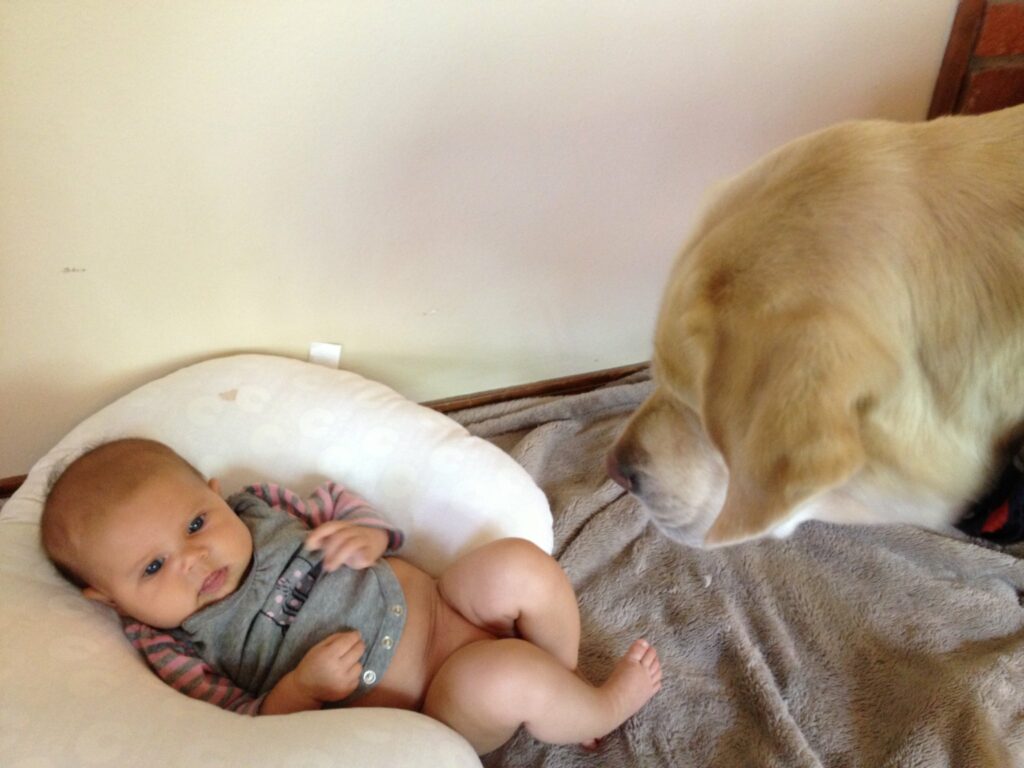
The second winter we lived in Arkansas, there was a huge blizzard. Zuri, now 7, was still strong and energetic. We outfitted her like a sled dog, and she pulled her tiny sibsters on a sled up and down our neighborhood street. She loved the snow. Sometimes, she loved it all little too much. She had a horrible habit of chasing me—just me!—anytime I went sledding. She would bark and nip at me while I was sledding! It was the only time she nipped me, ever! I would always forget this bad habit of hers until I was flying down a hillside getting nipped while she was frantically barking at me. Chaotic and maddening as it was, I couldn’t help but also laugh hysterically.
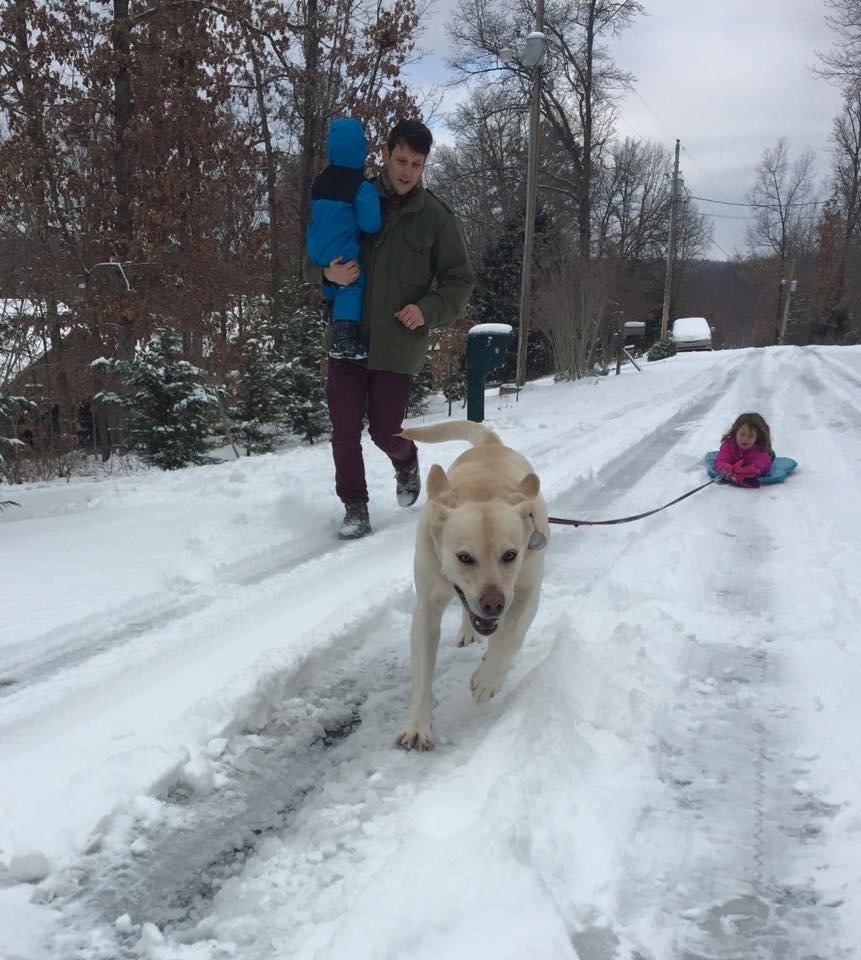
When Senya was 4, Juniper was 2, and Zuri was 7, we made the very difficult decision to sell our wonderful log cabin in Pennsylvania. The decision to do so was difficult, but we felt that we needed to return to this vibrant city full of social, cultural, and natural resources to support us during the era of raising small kids. I had a dream of what our life would be like there—like an actual REM sleep dream. Many specific elements of that dream were realized in the upcoming years.
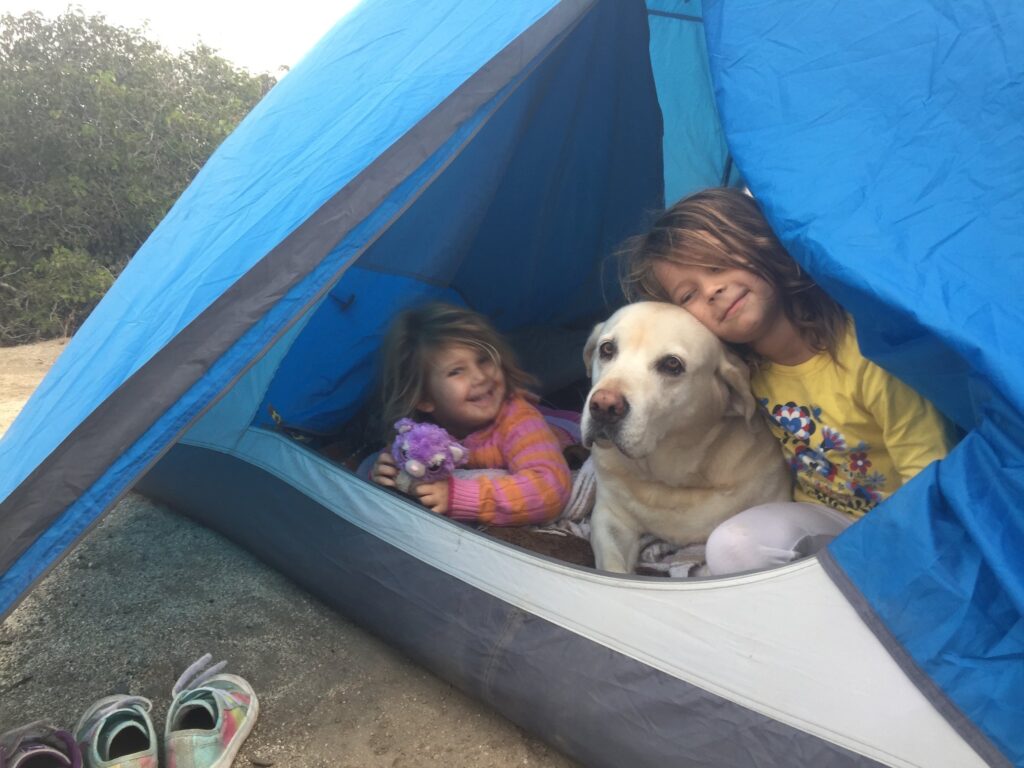
The years we spent living in Topanga were full of sunshine and sandy days at the beach. We were outside every, single day. One year, Senya went to kindergarten a short walk from our house. We got to know a lot of people in our small town that way and formed some of our closest relationships with other Topangan families. We went camping on the Channel Islands together, made gingerbread houses every December, and shared a lot of playdates and meals together. The other years, we homeschooled with an amazing group of likeminded families. In addition to learning together two days a week, we also celebrated solstice and other special days together. We went on camping trips in the desert and the Sequoias together. Senya, Juniper, Collin, and I were rich in community and friendship, and we had fun and happiness sprinkled throughout every day. But Zuri was spending her life sleeping away the majority of her days in a tiny house. I would take her out for walks as many days a week as I could, but beaches and parks had cracked down on their “NO DOGS ALLOWED” restrictions since that first year that Zuri, Sen, and I paled around everywhere. Sundays we always went to a specific stretch of dog friendly beach in Malibu so that Zuri could swim and play fetch and dig holes in the sand.
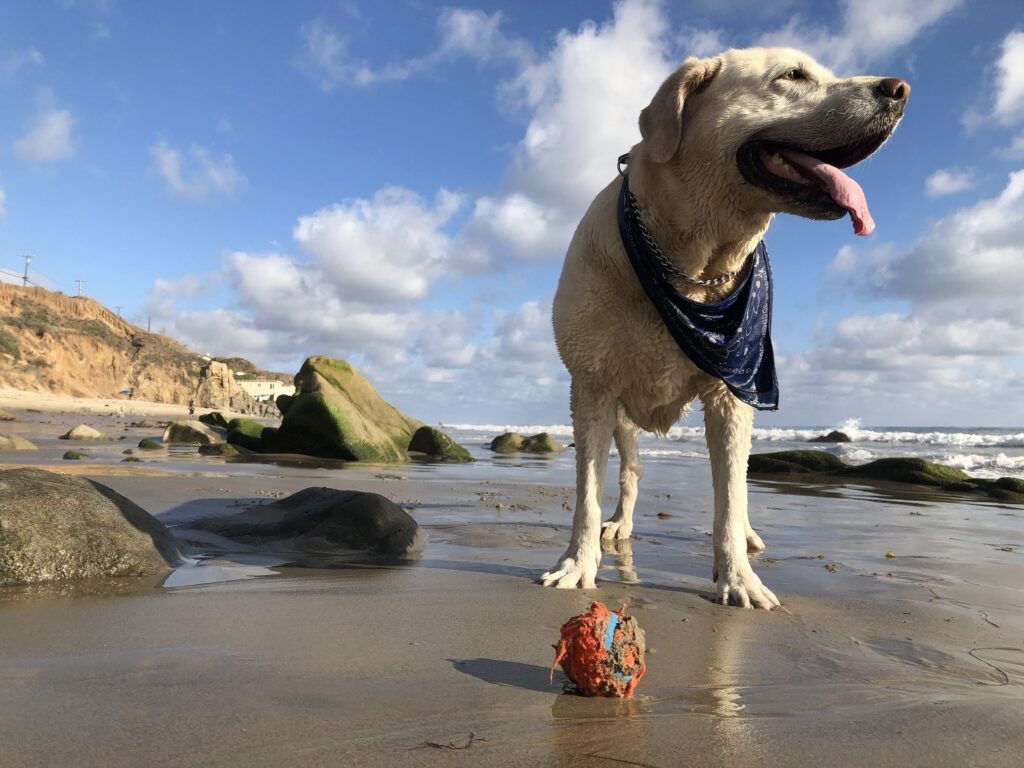
One Malibu Sunday, as a wave came gently rolling into shore, it knocked Zuri off balance and she fell down. She got back on her feet, but it happened a few more times that day. It was the first time that I really noticed that she wasn’t the invincible dog we had always known her to be. She was 9, but almost 10 at that point. Collin told me that this was an older age for a lab.
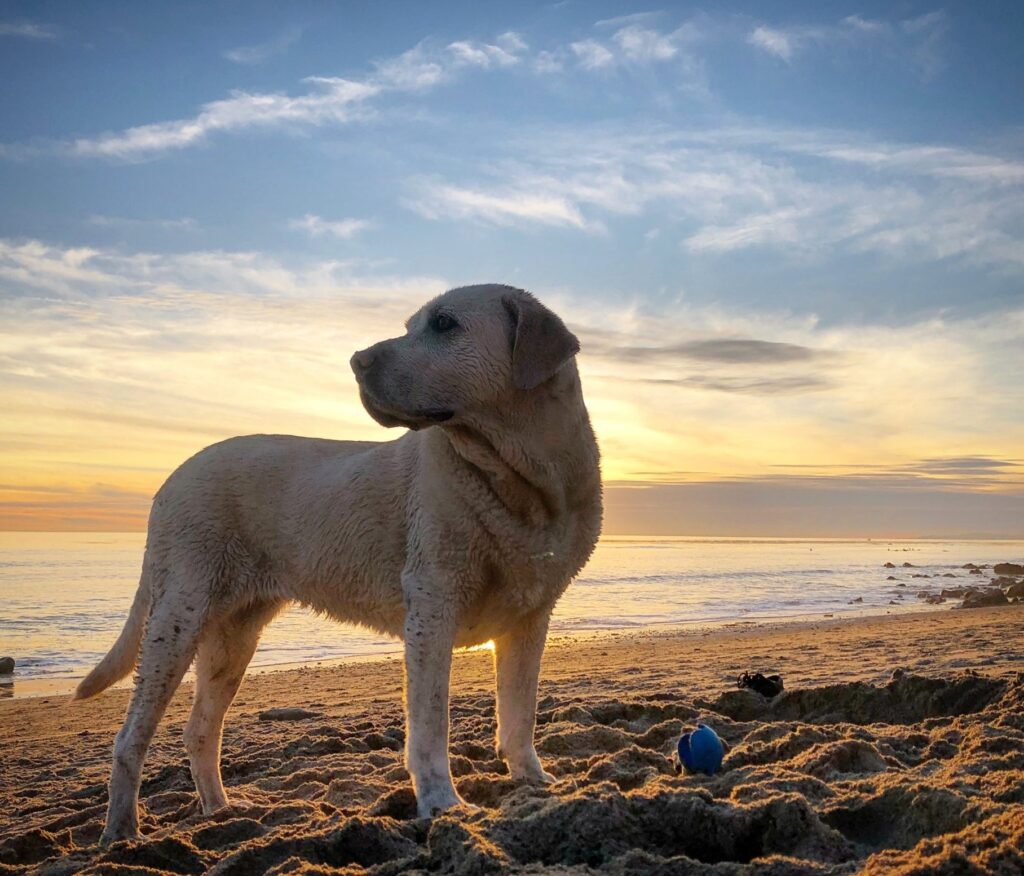
I cried my eyes out. I bought her the most comfortable memory foam bed I could find. We got her glucosamine supplements to strengthen her aging joints, and we upgraded dog food to make sure she was getting the best nutrition for her age.
Later that spring we decided to sublet our house, buy a used RV, and tour around the US and Canada for 3 months. Between the adjustments to Zuri’s lifestyle and the adventure of being on the road together, she really came back full-power on that trip. It was like Grandpa Joe when Charlie got the golden ticket. Collin would work during the weekdays and then drive a lot of the evenings and late into the night. Zuri would stand with her front feet up on the middle console, staring out ahead every minute that Collin was driving. 10:00 pm, you’d find Senya and Juniper fast asleep in their beds, and Zuri would still be standing up, next to Collin, helping him drive through the night to our next destination. 1:00 am and sometimes I’d be dozed off in the passenger seat, but Zuri would be standing there, 100% awake and dedicated to keeping Collin company in those long, dark hours of driving. Quickly into that trip, she earned the title of “Captain.”
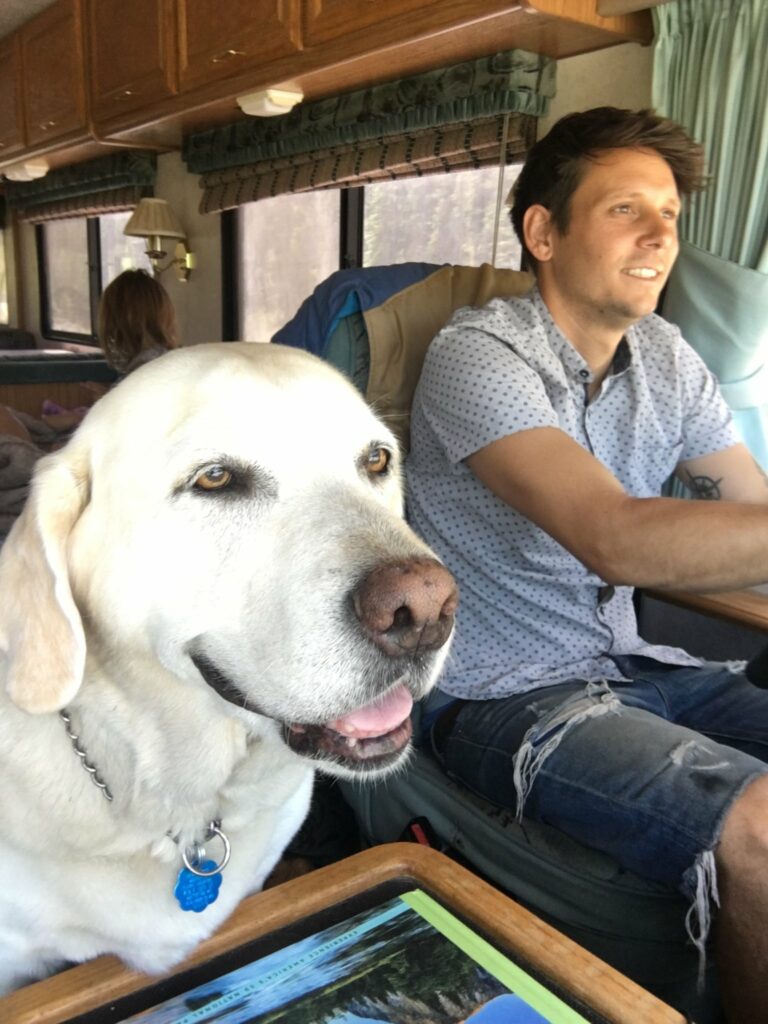
She loved that trip; right off the bat, we headed back to Pennsylvania. She loved the visit back east to her hometown. She loved visiting her grandparents and all of her family members out there. Everyone in our families got how central she was to our family. She had been with Collin and me from almost the beginning. Just the 5 of us, however, celebrated her tenth birthday on Old Tice Road, eating pizza and playing fetch. The double digits felt big. I wished I could slow down her age.
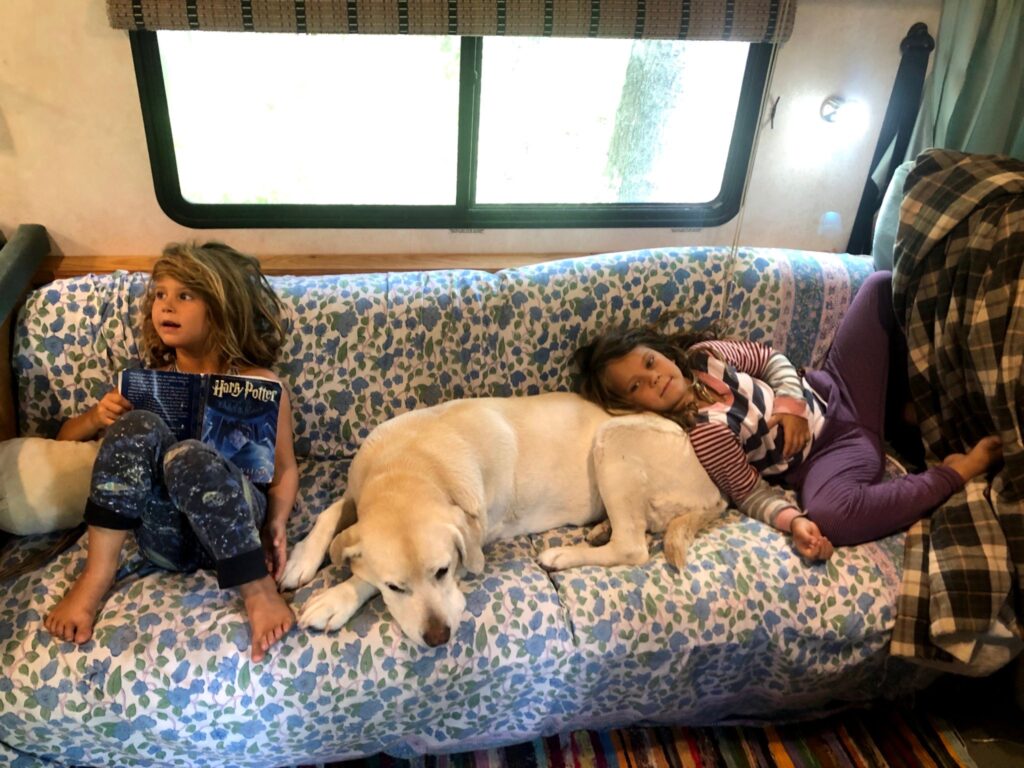
But she went on to live it up at the vitality of a much younger dog for the remainder of that trip. She loved the Grand Tetons, Glacier National Park in the US, Glacier National Park in Canada, and of course, she loved Banff. Collin and I had always dreamed of taking Zuri to Banff. It was one of our favorite places on earth, and we had backed 200 miles over the course of 3 weeks there before the Zuri era. Once we had Zuri and experienced how she loved hiking and camping and swimming as much as we did, we always wanted to take her to what we considered the quintessential place for exactly those things. And here we were, 11 years after that first backpacking trip, with Zuri and also Senya and Juniper. And all three of them loved it even more than I had dreamed. They loved the glacier rivers. Our whole family would swim down the glacier river currents for miles; the humans were all using inner tubes, but Zuri used those webbed feet with bliss.
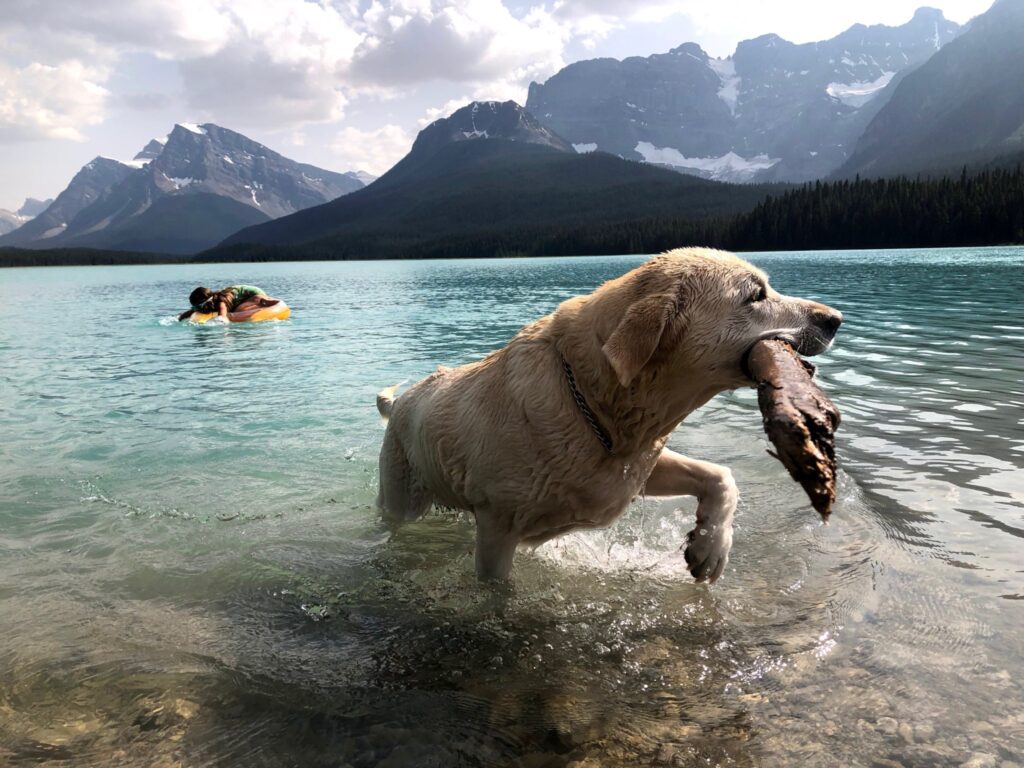
She channeled her inner dolphin, swimming when it was deep and galloping anytime she could touch the bottom. She also hiked with us many miles on that trip. We summited mountains, traversed tens of miles to reach glaciers, and discovered many, gorgeous mountain top lakes together. The water was the color of gemstones. The memories we made there and then will always be some of my favorite moments of my lifetime. All 5 of us in my most favorite destination on earth.
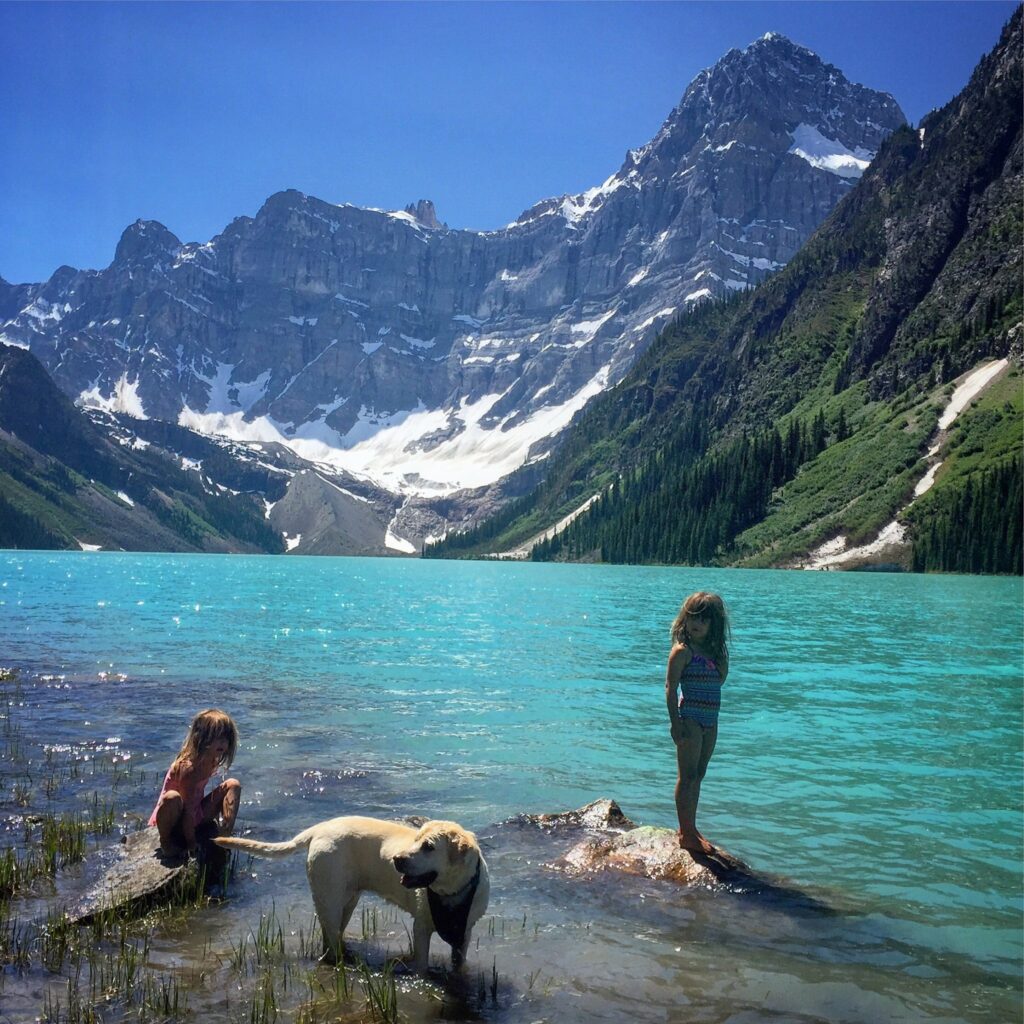
Once we got back from our road trip travels, we all resumed our lifestyles in California. For Zuri, this meant that she spent a lot of time sleeping on the sofa again. She did not consider our patio (our only fenced in outdoor space) a viable option for being outside. 30,000 cars a day sped or crawled (depending on the time of day) by our house daily. The noise pollution alone bothered her nerves. She found the heat and lack of grass equally off-putting. We took her on walks to dog-friendly parks several times a week, but this was such a different lifestyle than either her Arkansas or Pennsylvania lifestyle had been. I began to want to move back to the country life. Senya and Juniper were enthusiastic about this idea too. So, that following summer of July 2018, we got back in our RV and went to look for a place in the country.
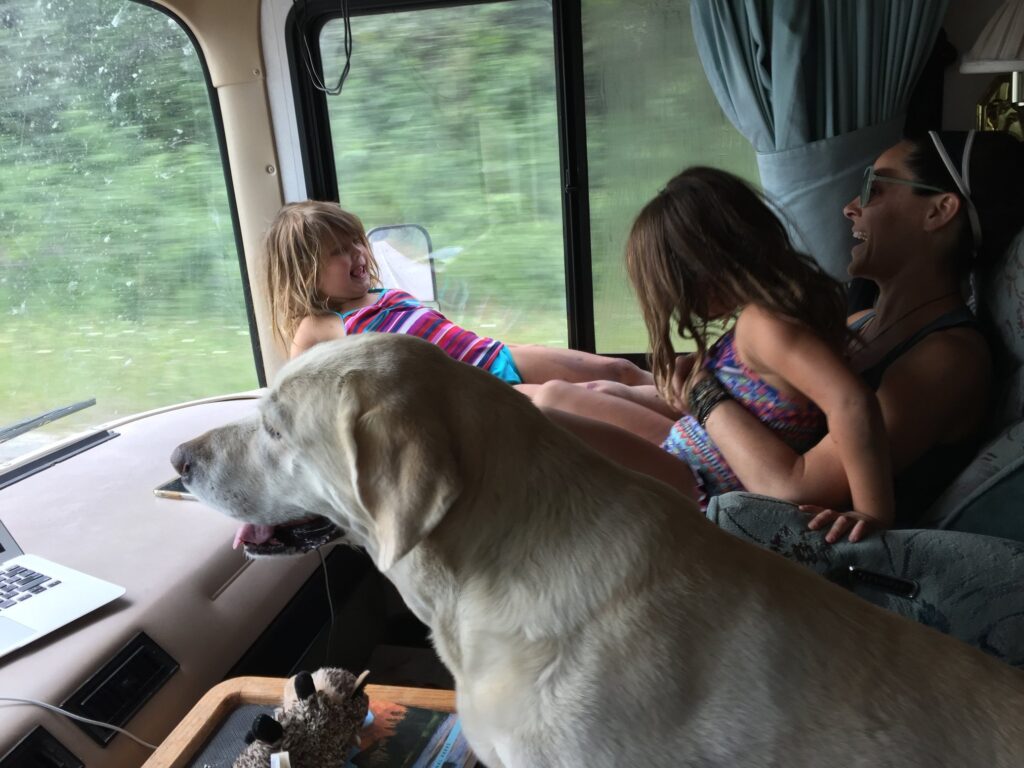
We investigated Boulder, Colorado (not exactly the country life, but we could at least have some semblance of a yard), and we examined Bend, Oregon. We considered moving back to Arkansas or Pennsylvania. But the place that kept calling to me was Vermont. We drove to Vermont and only planned to stay a few days to visit my uncles who lived there. We didn’t feel like seeing a lot of properties, so we narrowed it down to just one. It was in a tiny, rural town called Pawlet. The pictures made it look too good to be true. But then we arrived, and it was even better than the pictures made it appear.
We drove about a mile up a dirt road, and then turned onto another dirt driveway. A former Buddhist retreat center, the property was studded with multiple log cabins: two the sizes of regular homes and one, small one. In the center of the unwooded section of the property, just steps in front of the main log home, there was a giant, clear pond surrounded by native bushes, grasses, flowers, and weeping willow trees. Out from the pond flowed a sparkling creek that cascaded down boulders and culminated in a large waterfall. Zuri yelped with delight when she jumped out of the RV. She was in paradise. Juniper and Senya loved it just as much. We put in an offer within the week, and within 3 months it was our new home.
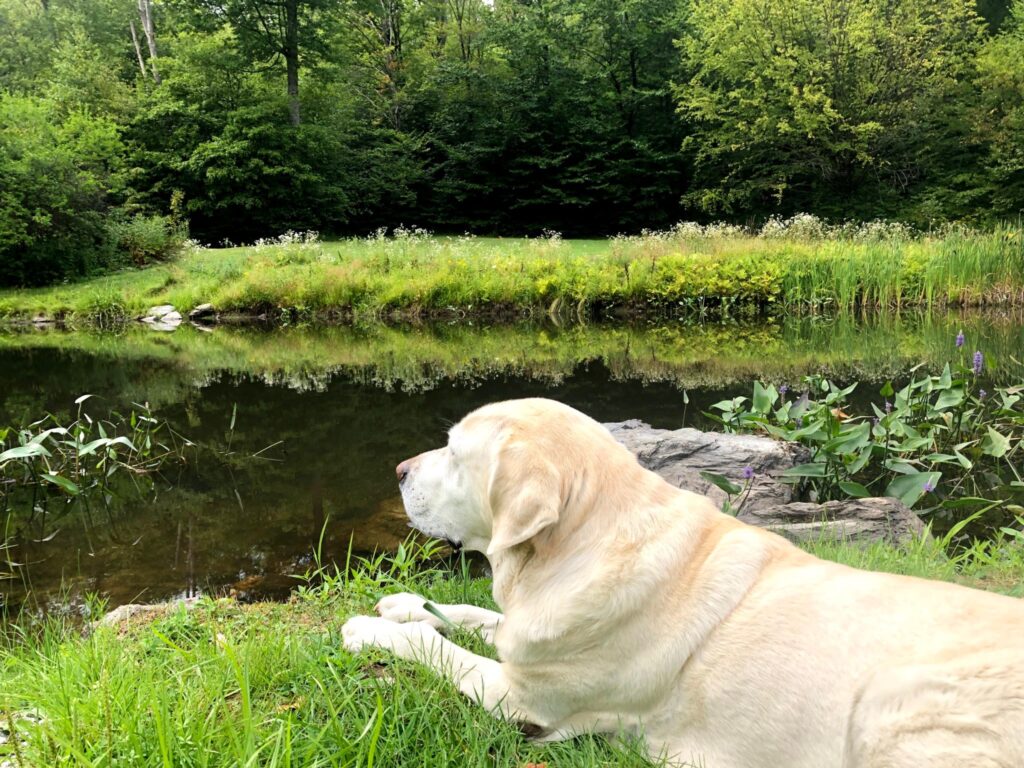
We lived there, on our beautiful mountain retreat becoming more intimate with nature than I ever knew was possible. It’s hard to mine the most sacred and intimate experiences from my soul to put them into words to share. Sometimes it feels like these moments recalled are like an ember pulled from the fire of my heart, glowing and sacred. How they are received by another depends on the fire of natural wonder in the listener’s heart. My words either become an ember they receive and add to their own glow, or the spark dims and darkens until it becomes a cold, dark lump of charcoal.
One winter morning, the air was glistening with tiny flecks of ice crystals; the extreme cold had turned any moisture in the air to delicate, gold glitter. Another morning, we woke to almost 4 feet of snow after going to bed with none on the ground (Zuri all but disappeared when we let her out that morning). The Milky Way was stark and visible just outside our door– a celestial theatre broadcasting live nightly. The only sounds we heard were those from nature: birdsong, frogs, and crickets in the summer contrasted by a quiet hush from the soft blanket of snow or the wind rustling the bare branches in the winter.
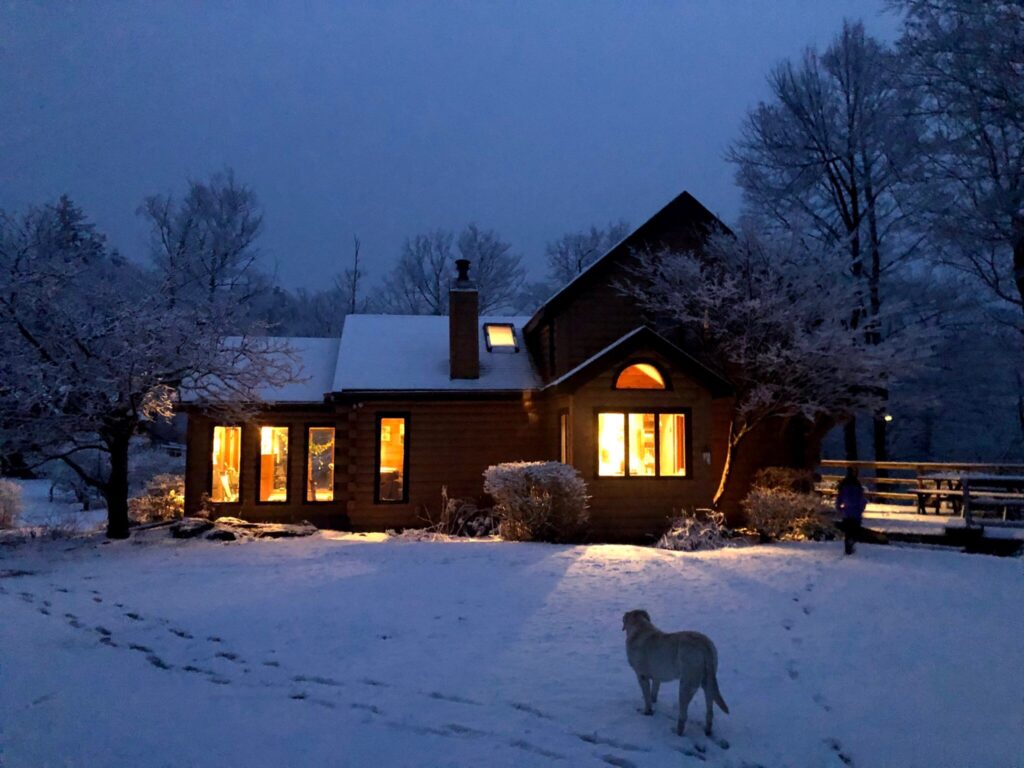
My heart hurts every, single day and longs to be back on our land. I had no idea how much it would ache to live away from the land where we had these intimate experiences as a family. Not only is that where Senya and Juniper’s childhood took place, but that is also where Zuri lived out the last years of her life with us. Therefore, my grief is all bound up together—grief for Zuri, grief for the kids’ childhood being over, grief for the land. If I could move back there today, I would. But I no longer have claim to that land, and the new residents have fallen in love with it too. This both hurts and comforts me at the same time. I am glad that the stewards of the land cherish it, but I also feel desperate to return home. I know the farm would be different; and the only way that I can hold that in my heart is to return to the story of Zuri.
When Zuri died, I felt a loss I never knew I could experience and continue breathing. It didn’t make sense that my heart could hurt so much and yet still beat. It seemed that the pain and ache as intense as I felt in my heart should kill my body. Collin and I placed her well loved and lifeless body deep in the rich, earth of our beloved land– facing east towards the glorious sunrise and under where we’d see Polaris from our home.
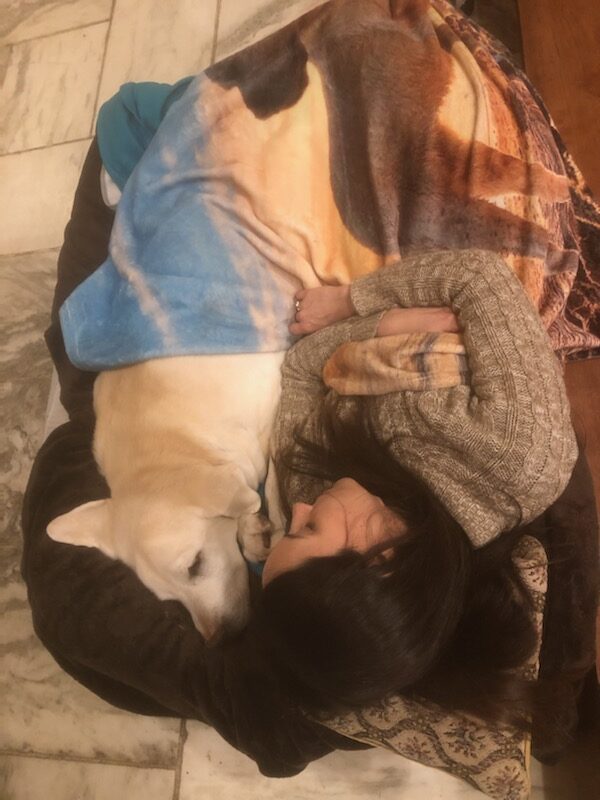
Not everyone understands how someone can love a nonhuman person as much as they love their dearest humans, but that doesn’t make it any less real. She was simultaneously my first baby, my best friend, and my therapy animal. She shouldered so much of life’s burdens for me, and when she died—in addition to the grief so shockingly consuming that it stole my breath from my lungs—I also felt the heaviness of life return to my shoulders. She was no longer able to help carry the weight of life, and with the sorrow of her death it was heavier than ever.
I never thought I’d want another dog after Zuri died. But in the months following her death, I realized that the only one who could help me carry this particular grief was going to have to be another person in a dog suit. I didn’t know how to live life without a dog anymore. Love was the only thing that was going to heal my broken heart enough to be functional again, and I needed the kind of love that only a dog could bring into my life.
Indi came into our life like a little tornado. The opposite of Zuri in almost every way, she made it clear that—as younger siblings often do—she was going to fill the spaces that Zuri’s personality left vacant. She hates swimming (Zuri LIVED for water). She loves peanut butter (it was one of the only foods Zuri despised). She likes dogs more than she likes most humans (Zuri was more into humans than dogs), and she enjoys her dog-ness (Zuri always seemed a bit more refined and didn’t engage in butt-sniffing, crotch ramming, or jumping on people to greet them; conversely, these are Indi’s three top ways of saying hello).
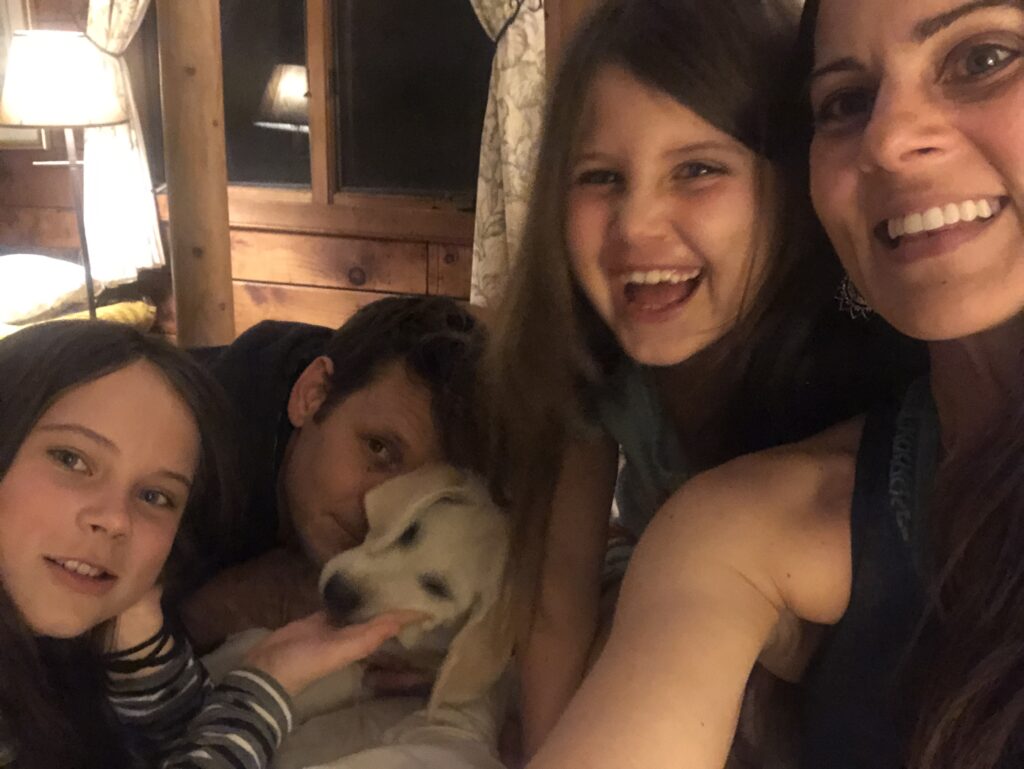
I will always, always grieve Zuri’s absence from my daily life. Where all the love I have for her brought me joy when she was alive, now, it still just hurts. It’s been more than 2 1/2 years since she died, and I still cry when I think of her. Having Indi hasn’t changed that, but she does help with the burden of grief that I shoulder. She did, indeed, help heal me with her unconventional methods of barking at me when I’d try to teach her commands, refusing to try to impress me, and sticking her entire tongue in my mouth unexpectedly.
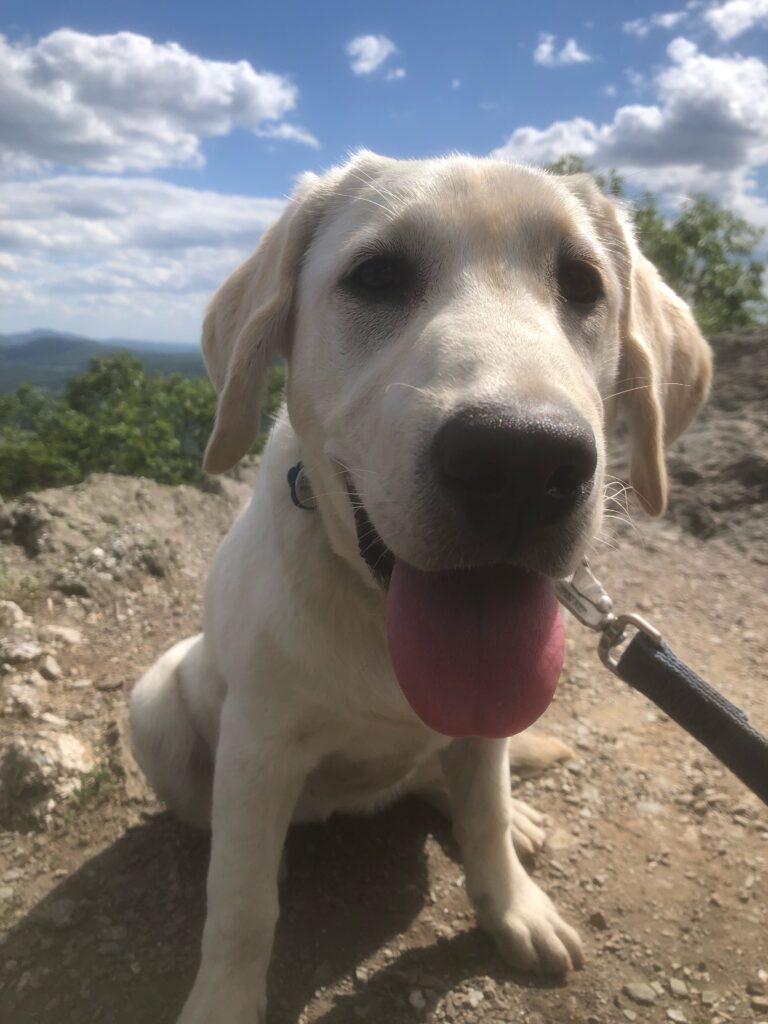
Similarly, unless we ever move back to our old land, I will always grieve that loss. It felt like we had to move for various reasons, and I drive myself a little crazy if I question that too much. I know it’s been good for Collin’s company to be here for the start up phase, so I lean on that. We’ve met some dear friends we never would have known had we never left. And we’ve reconnected with family and friends in a way that has strengthened those bonds at a critical time in my kids’ lives. So, I try not to regret it, and these gifts help me accept what I can not change and be grateful for what we did gain.
But I’d be lying if I said that I don’t dream of returning to Vermont and living a land based life once again. I miss the seasons. I miss tapping the maple trees in the spring. I miss seeing the flowers return slowly and seeing the earliest ones get a snow fall. I miss the long summer nights and the short, dark winter days. The former good for being outside all day, the latter for cozying up by the fire around 6:00 pm (unapologetically in pajamas) with a mug of something warm. I miss the brilliant fall foliage that truly feels like a work of art. I miss the quiet. I miss the green. I miss living in the last place where I lived with my very first baby dog.
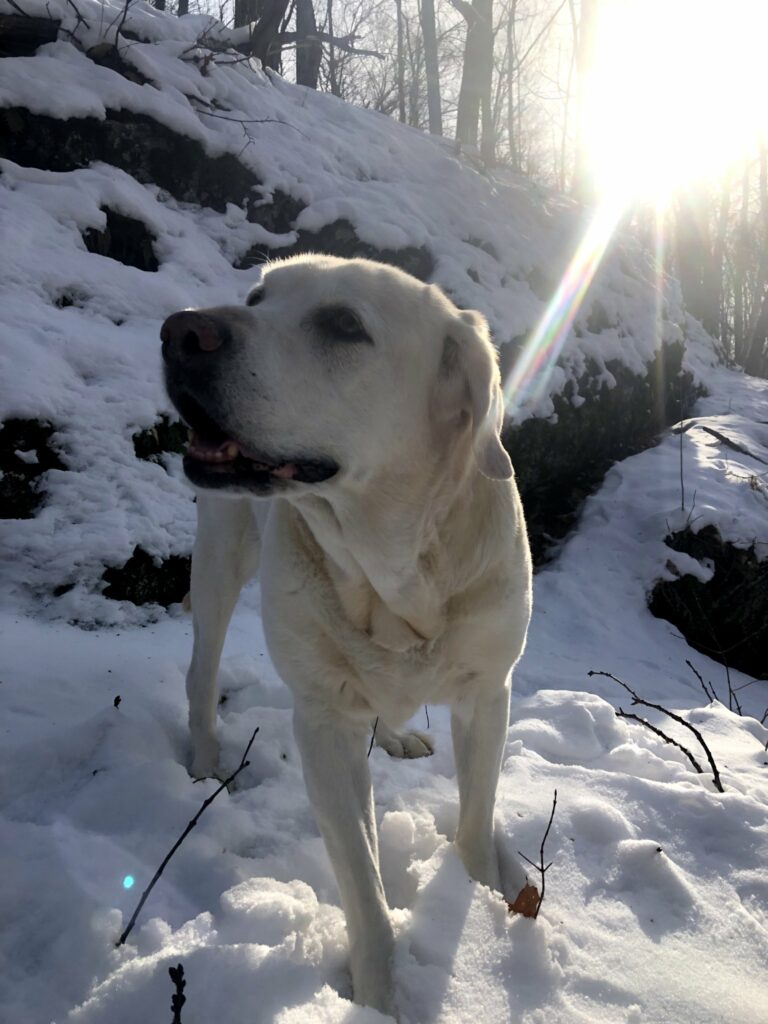
So even if I never return to the exact mountain where we used to live with Zuri and call home, I do know from experience that you can love another–dog, child, home–not the same way but the same amount as another. That is why I was reaching so hard for the farm. Because, I’ll say it again: love is the only thing that heals a broken heart. And that is why still, if we are ever lucky enough to move the farm, I know the love and bond that we have with the land and our nature based life can heal the grief and shoulder the burden of loss.
Until then, every morning I’m greeted by a big, wet dog nose on my cheek, followed by a dog tongue right on the mouth. And that helps a lot.
